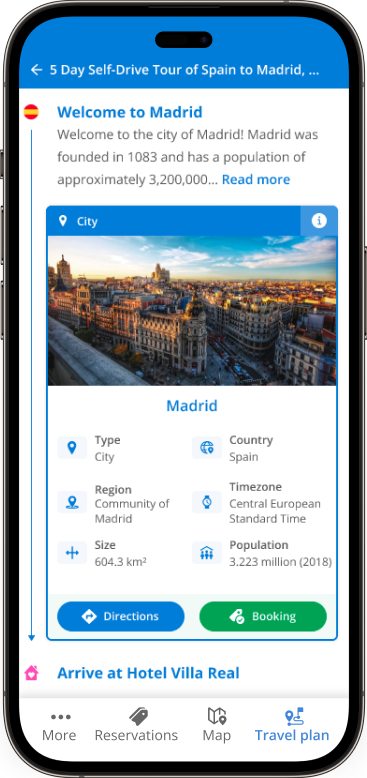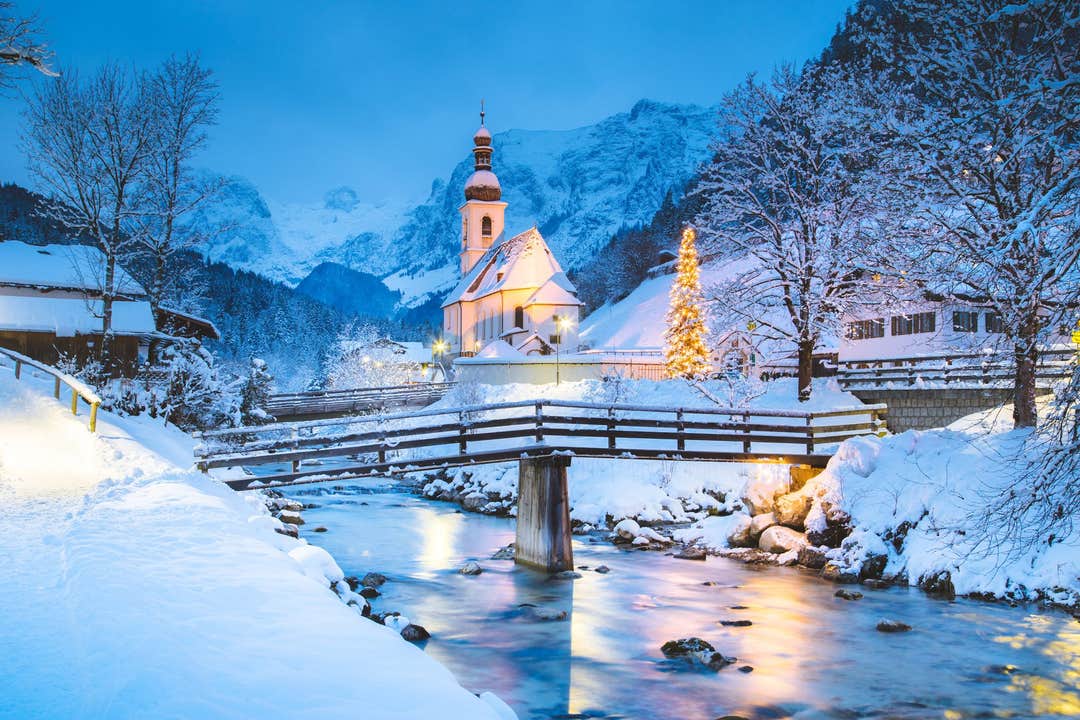
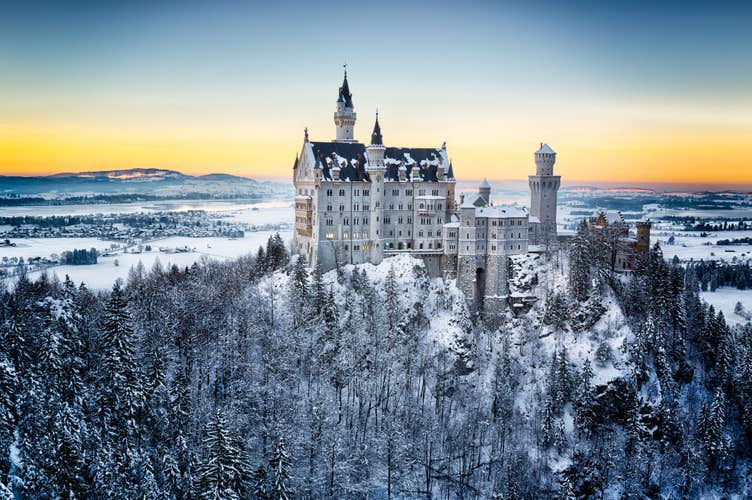
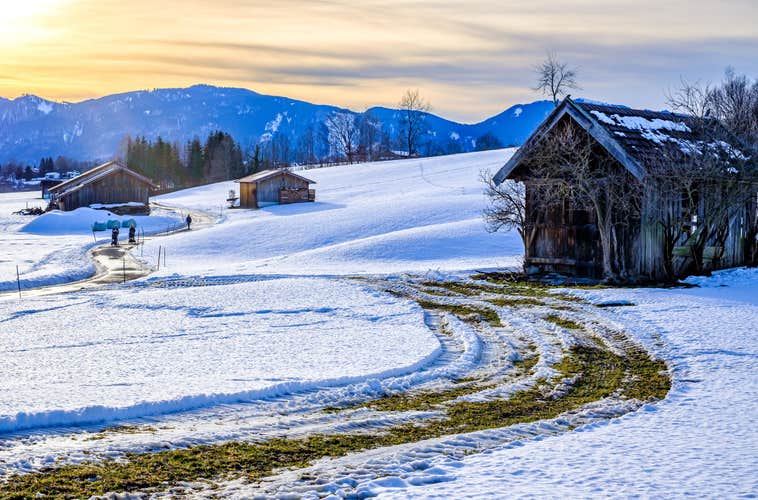
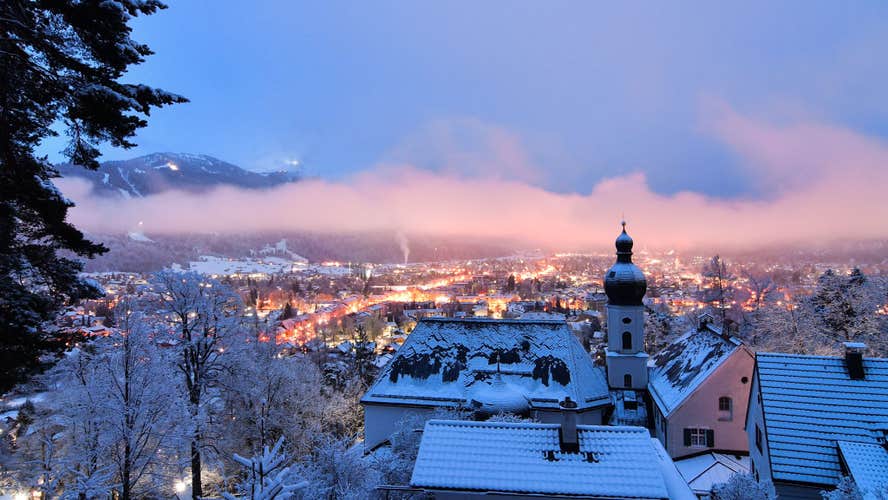
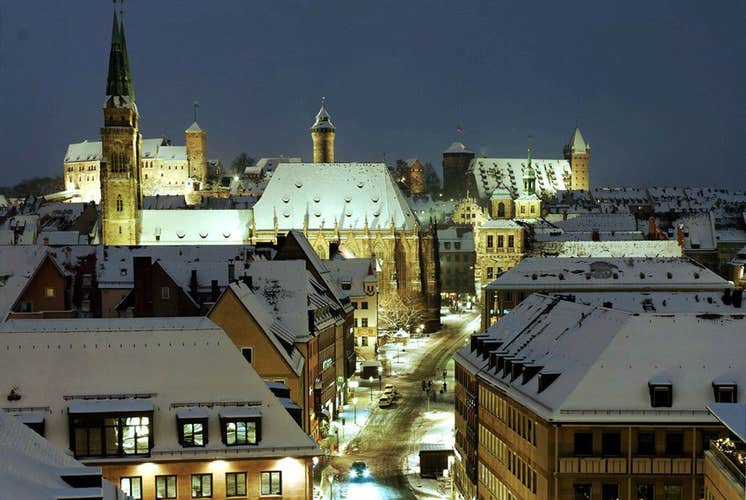
When planning a trip to one of Germany’s most enchanting regions, Bavaria stands out with its stunning landscapes, rich cultural heritage, and endless opportunities for adventure. But with so much to see and do, the question often arises: When is the best time to visit Bavaria?
Discover the top city breaks in Bavaria, where fairy-tale castles, vibrant festivals, and lush valleys await. Explore breathtaking landscapes and scenic routes year-round, from snow-capped mountains to charming villages. Experience the best road trips in Bavaria for unforgettable adventures. This region truly has something for every traveler!
In this blog, we’ll dive into each season's unique experiences, helping you choose the perfect time for your Bavarian getaway. Join us as we uncover the best time to visit Bavaria for unforgettable experiences. Choose from a wide range of vacation packages in Bavaria to make the most of your trip, or read on to discover the best time to visit Bavaria!
Is Winter the Best Time to Visit Bavaria?
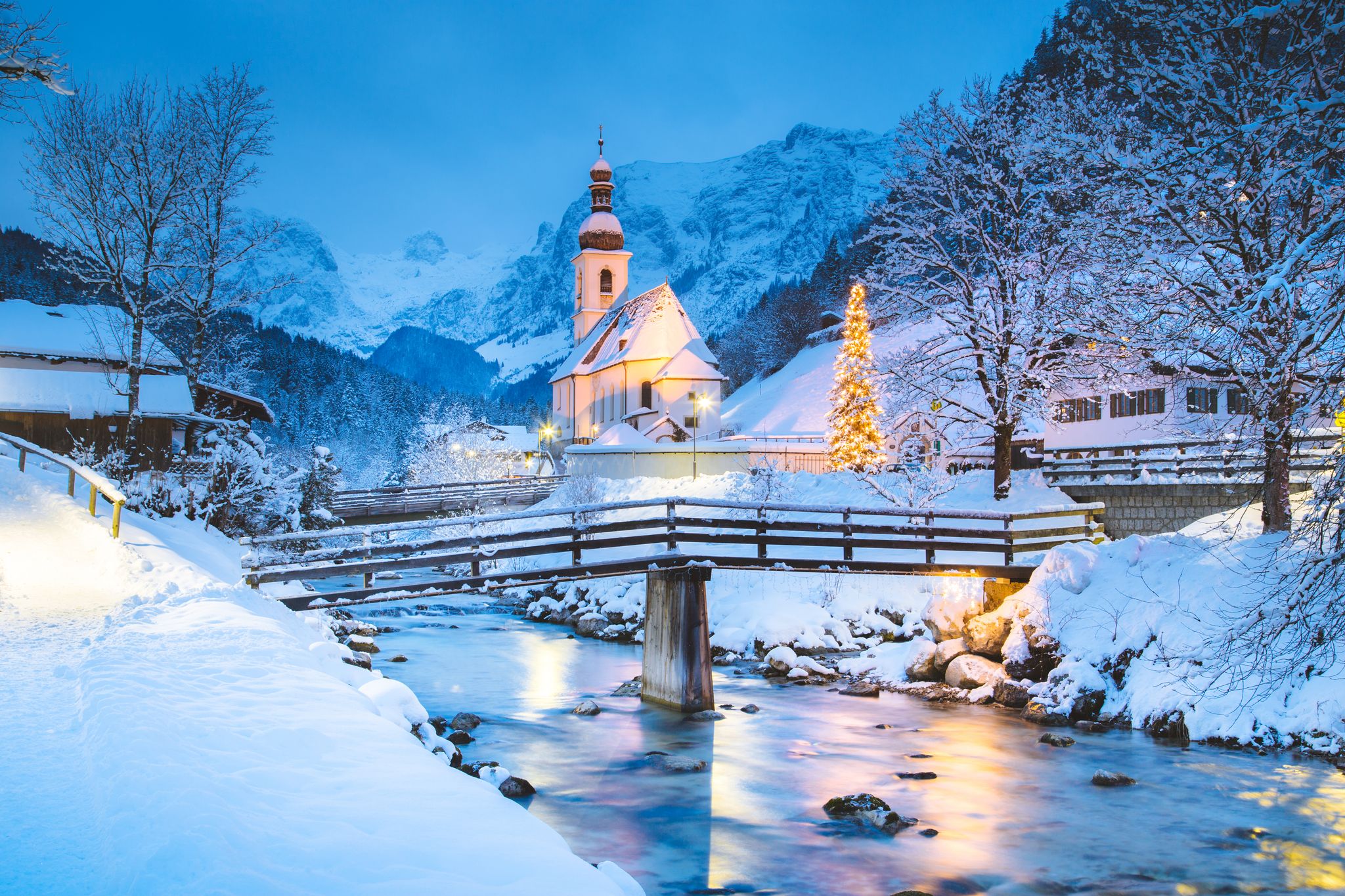
Winter in Bavaria is a magical experience that transforms the region into a picturesque wonderland. It offers a mix of natural beauty, festive traditions, and outdoor adventures. As the crisp air settles in, Bavaria’s landscapes are blanketed in a pristine layer of snow, creating a serene and enchanting atmosphere.
Cold temperatures and frequent snowfall characterize winter in Bavaria. Average temperatures range around 34 F (1 C) and 38 F (3 C) to 22 F (-6 C) and 24 F (-4 C). The region experiences significant snowfall, especially in mountainous areas, and occasional rain. Cold waves make Bavaria one of Germany's coldest areas in winter, though Fohn winds from the Alps can briefly warm temperatures.
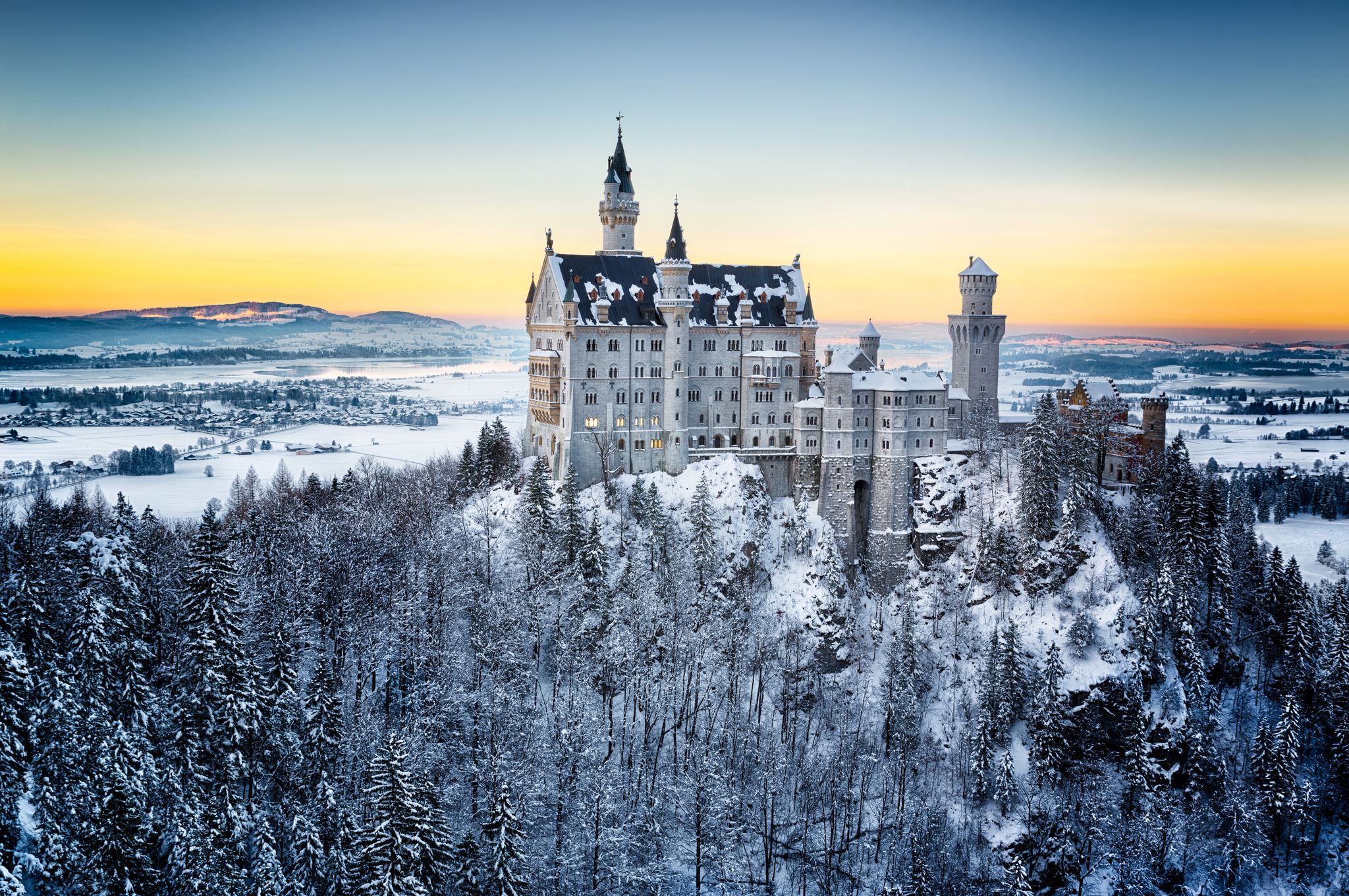
With short daylight hours, it’s essential to dress warmly in layers, including thermal clothing, gloves, and a good winter coat. These conditions are ideal for winter sports like skiing and snowboarding, making Bavaria a perfect destination for winter activities and exploring charming towns.
In December, Bavaria's cities like Munich and Nuremberg attract visitors with bustling Christmas markets and rich cultural offerings. These markets are festive hubs known for traditional crafts and can be pretty crowded, especially on weekends and around Christmas and New Year's.
Ski resorts are a popular destination during winter as well, drawing winter sports enthusiasts seeking pristine slopes and stunning alpine vistas. These resorts are the busiest on weekends and school holidays, driving up accommodation, ski passes, and equipment rental compared to quieter periods. Choose from the best ski trips in Bavaria, enabling you to make the most of your visit without the hassle.
Best Places to Visit in Bavaria in Winter
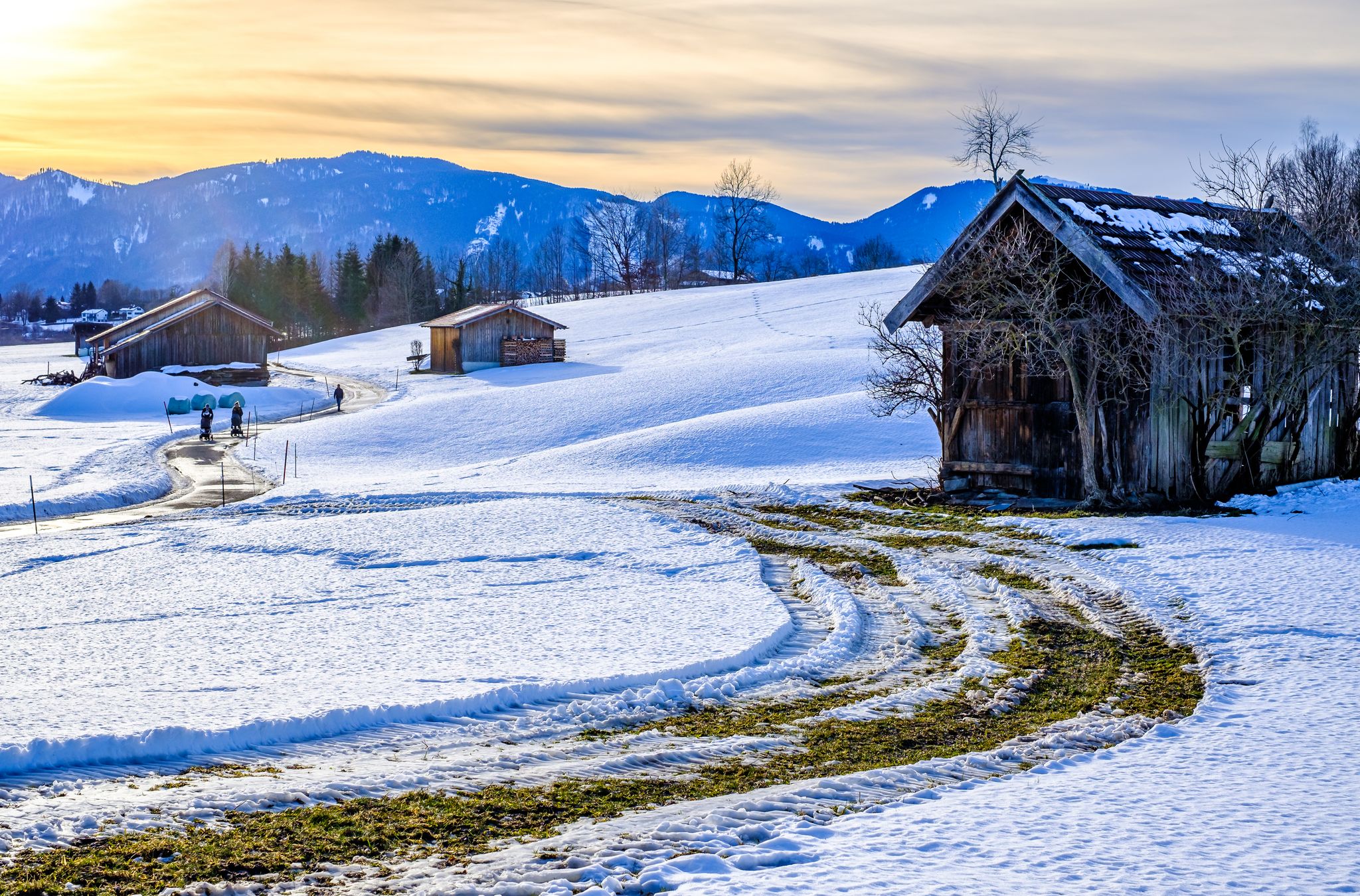
Winter in Bavaria offers a plethora of enchanting destinations, each providing unique experiences amidst the snow-covered landscapes and festive ambiance. Here are some of the best places to visit in Bavaria during the winter season.
Garmisch-Partenkirchen in Winter
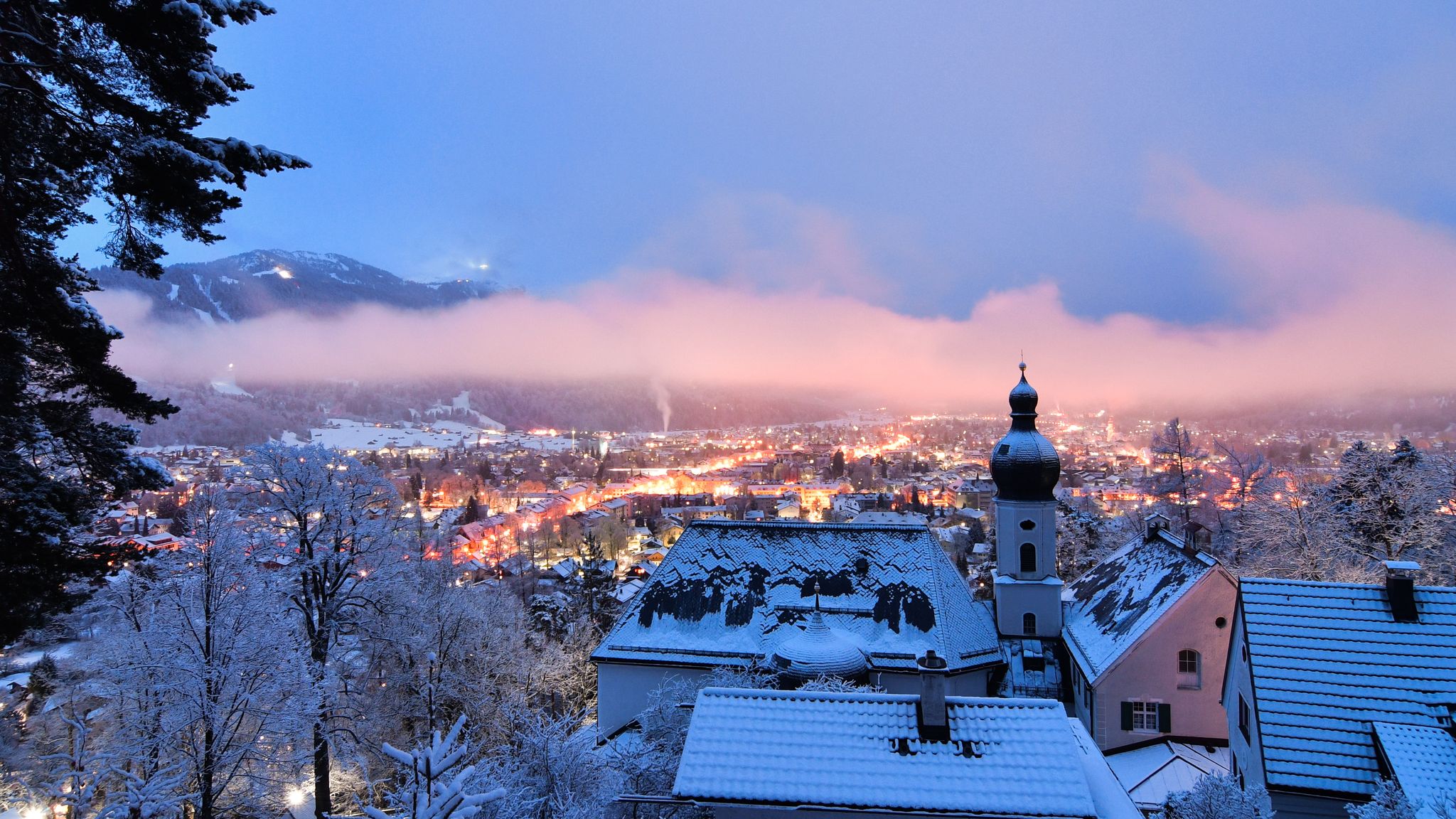
Garmisch-Partenkirchen offers world-class ski resorts and stunning alpine views, making it a premier winter destination. The Garmisch-Classic ski area and Zugspitze, Germany's highest peak, provide excellent snow conditions for skiing and snowboarding. Both locations offer breathtaking panoramas, making every moment unforgettable. After a day of adventure, unwind in the charming town center with local cafes and shops.
For a magical winter experience, explore the most popular vacation packages in Garmisch-Partenkirchen, perfect for all types of travelers. The Christmas market in the town center adds to the festive atmosphere. Whether skiing or soaking in the holiday charm, Garmisch-Partenkirchen offers an unforgettable alpine retreat.
Nuremberg in Winter

Nuremberg is a historic city that becomes especially enchanting in winter. One of its highlights during winter is the Christkindlesmark, offering handcrafted gifts, traditional foods, and mulled wine, creating a festive and magical atmosphere. Visitors can also explore Nuremberg Castle, a historic fortress with panoramic city views. The Old Town, with its medieval streets and cozy cafes, invites visitors to wander and soak in the holiday spirit.
For those seeking a deeper experience, popular Christmas tours in Nuremberg provide a unique look at the city's traditions. During the festive season, these tours showcase the city's history, architecture, and charm. The Christkindlesmarkt, along with other attractions, offers a memorable holiday getaway. Nuremberg’s blend of history and holiday cheer makes it a must-visit destination in winter.
Munich in Winter
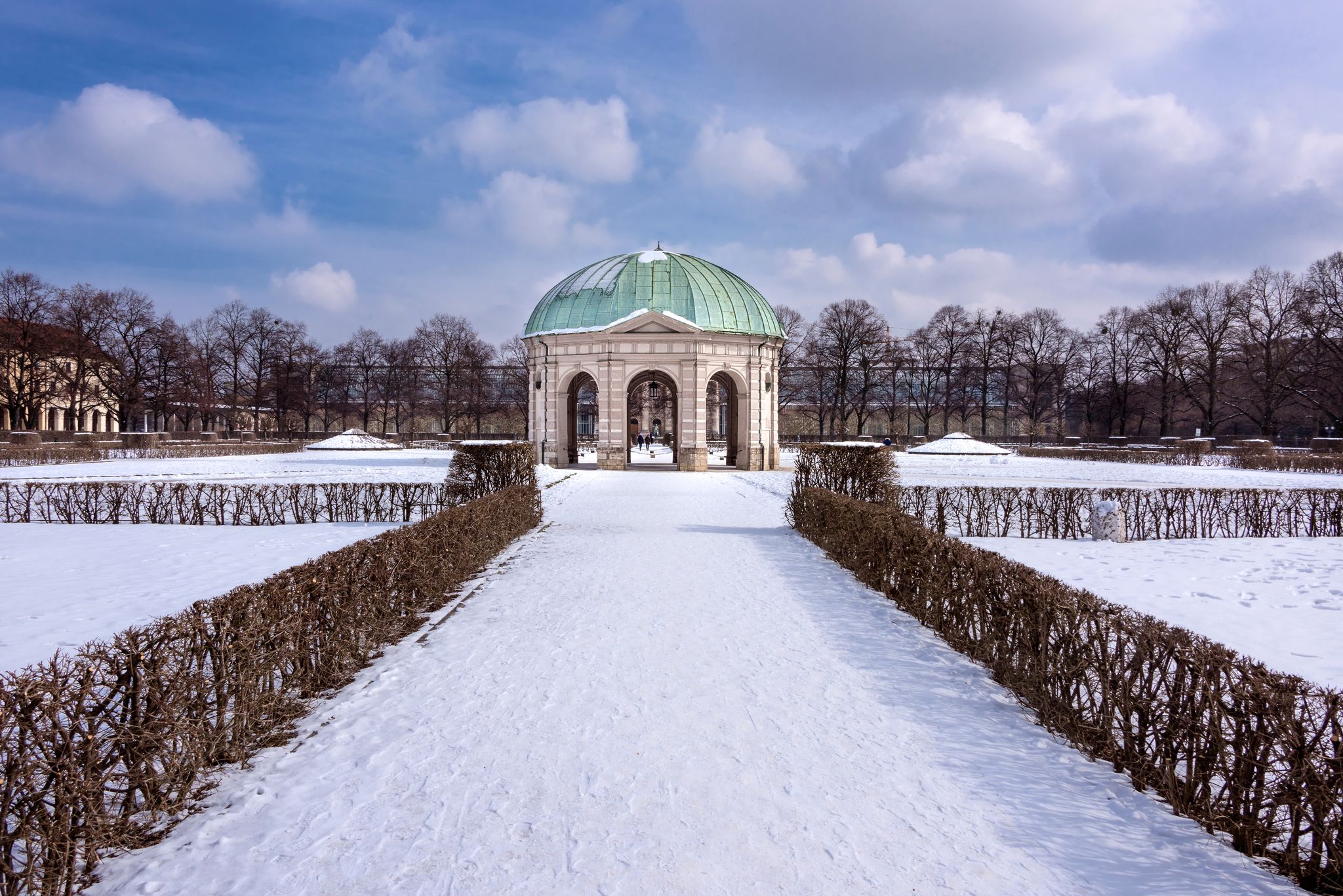
Munich, the capital of Bavaria, is a winter haven filled with festive markets and cultural attractions. The Marienplatz Christmas Market, set against the stunning city hall, offers handcrafted gifts, treats, and mulled wine. Visitors can also enjoy ice skating at Olympiapark or stroll through the English Garden’s winter landscapes. Nymphenburg Palace, with its regal beauty, adds to the city’s charm.
Explore the best of the holiday season with popular Christmas tours in Munich. Discover the city's festive charm and traditions. Winter is one of the best time to visit Munich when Christmas markets and landmarks shine. Unwrap unforgettable memories in Munich’s magical winter wonderland. For a detailed breakdown of winter in Munich, check out this article on the best time to visit Munich.
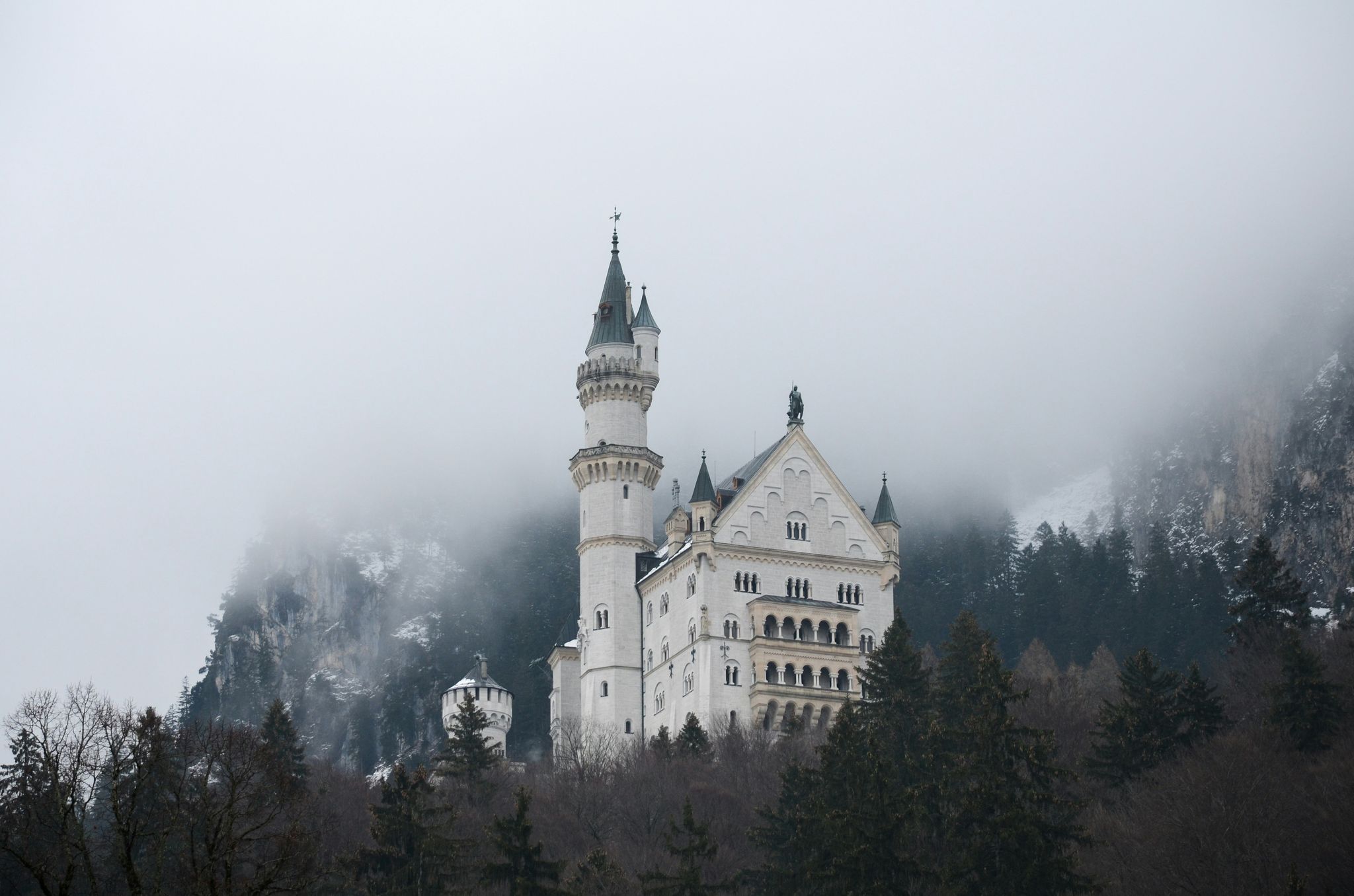
For an unforgettable time, take a day trip from Munich to visit Neuschwanstein Castle, the iconic fairy-tale castle. Consider a VIP day trip to Neuschwanstein and Linderhof Castle from Munich for a guided experience.
Tips for Visiting Bavaria in Winter

Visiting Bavaria in winter offers a magical experience with its snowy landscapes, festive markets, and winter sports opportunities. Here are essential tips for travelers planning a winter trip to Bavaria:
Pack accordingly: Bavarian winters are cold, so pack warm clothing, including thermal layers, waterproof outerwear, hats, scarves, gloves, and footwear with good traction for icy surfaces.
Plan for Christmas markets: Discover the charming Christmas markets (Christkindlmarkte) in Munich, Nuremberg, and Regensburg. The ideal time to visit Bavaria for a festive atmosphere is December, with markets beginning in late November.
Enjoy winter sports: Visit Bavaria's ski resorts, such as Garmisch-Partenkirchen, Berchtesgaden, or Oberstdorf, for skiing and snowboarding. The best time for winter sports is from December to February.
Visit iconic attractions: Visit Neuschwanstein Castle and historic sites in Munich. Many indoor exhibits and tours are available year-round, regardless of the weather.
Book accommodations early: Winter is a popular time to visit Bavaria, especially around Christmas and New Year's. Secure accommodations in advance, particularly if planning to stay in popular tourist destinations or ski resorts.
Be aware of weather conditions: If you plan to drive, check weather forecasts and road conditions. While Bavaria is well-prepared for winter weather, staying informed about potential disruptions is essential.
Experience Bavarian cuisine: Warm up with hearty Bavarian dishes like hearty stews, sausages, and dumplings (Knodel). Don't miss out on festive treats like gluhwein (mulled wine) and roasted chestnuts at the Christmas markets.
Explore indoor activities: If weather conditions are challenging, explore indoor attractions such as museums, galleries, and breweries. Munich's museums, for instance, offer excellent options for a cultural escape from the cold.
Is Spring the Best Time to Visit Bavaria?

Spring is the best time to visit Bavaria, from March to May. With blooming flowers and mild temperatures, the region transforms as snow melts. Spring in Bavaria is perfect for hiking, cycling, and exploring picturesque trails in the Bavarian Alps. Charming towns come alive with spring festivals and markets, adding to the vibrant atmosphere. It’s also the ideal season to enjoy Bavarian cuisine and local beers in outdoor beer gardens.
Average temperatures in Bavaria during spring range from 45 F (7 C) to 60 F (15 C), providing a comfortable climate for exploring attractions such as the Romantic Road. There may be occasional showers, but overall, spring in Bavaria tends to be less rainy compared to other seasons.
Spring in Bavaria is perfect for outdoor adventures like the Eagle's Nest and Bavarian Alps private tour from Salzburg. Munich and Nuremberg see more visitors as the weather warms, but crowds remain manageable. Enjoy nature’s beauty and vibrant cultural events in this stunning season.
Best Places to Visit in Bavaria in Spring

Spring is a delightful time to visit Bavaria, Germany. As the weather warms, flowers bloom, and outdoor activities become more enjoyable. Here are some of the best places to visit in Bavaria during spring.
Felsenmeer in the Spessart Forest in Spring
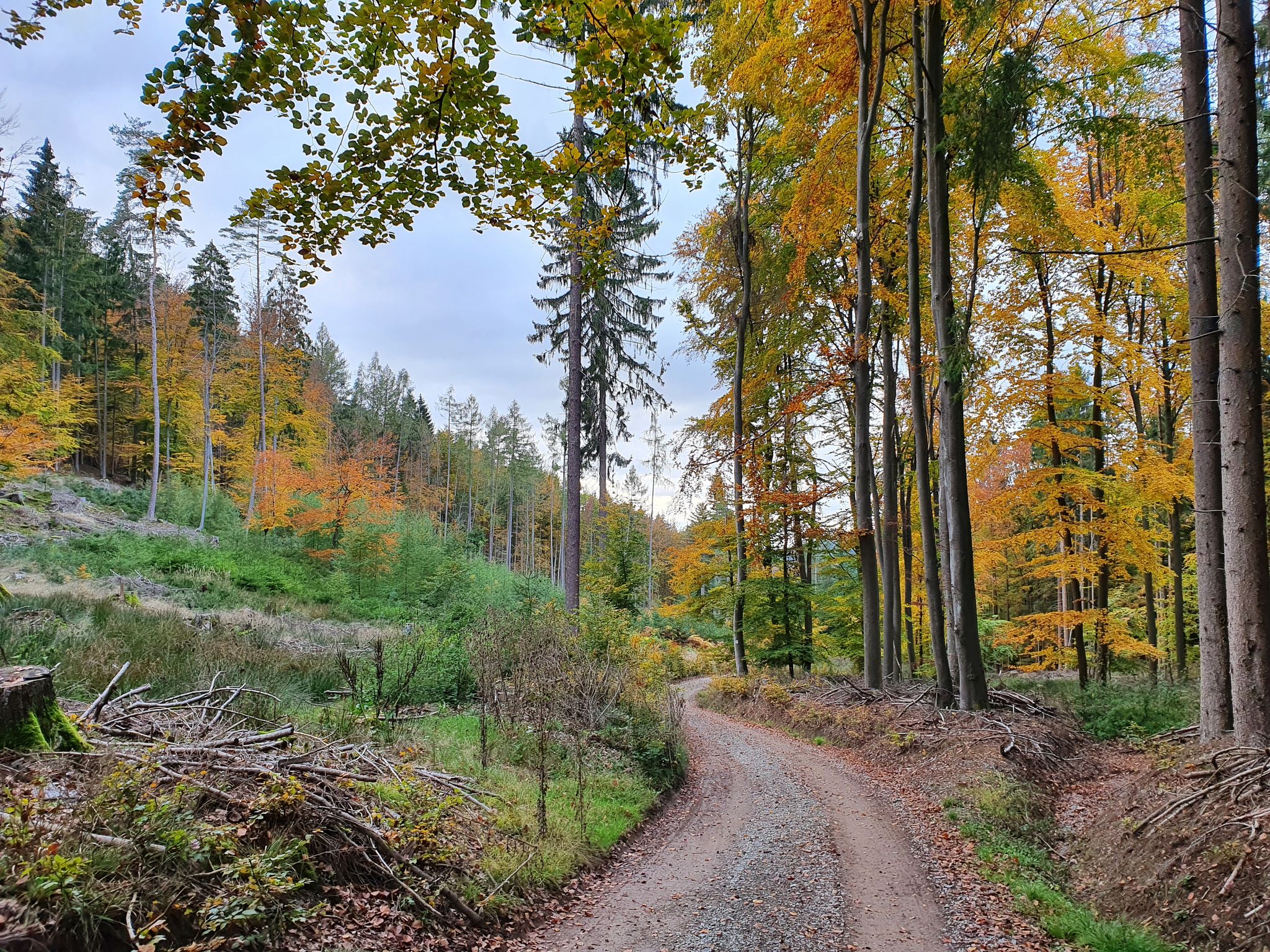
Felsenmeer is a stunning landscape of giant boulders in the Spessart Nature Park in northern Bavaria. The rocky terrain comes alive in spring with blooming wildflowers and fresh greenery, creating a picturesque scene. This natural wonder is perfect for hiking and photography, offering peaceful surroundings and unique geological formations.
The Felsenmeer provides hikers with scenic trails through a striking landscape of towering boulders and vibrant flowers. The contrast of nature and rocky terrain makes it a photographer’s paradise. Visitors can immerse themselves in the area's serene beauty while exploring its natural wonders.
Franconian Switzerland in Spring

Franconian Switzerland (Frankische Schweiz) features stunning limestone formations, deep valleys, and lush forests. Spring brings lush greenery, cascading waterfalls, and blossoming fruit trees, making the landscape come alive. Visitors can explore charming villages like Gossweinstein and its picturesque castle. The romantic Wiesent River Valley offers hiking trails through medieval castles and limestone caves.
This northern Bavarian region is perfect for outdoor enthusiasts and history lovers. It offers scenic views and cultural experiences. Hiking through the valley reveals natural wonders and hidden gems like limestone caves. With its natural beauty and rich heritage, Frankische Schweiz offers a peaceful escape, perfect for hiking and village exploration.
Wurzburg’s Vineyards in Spring
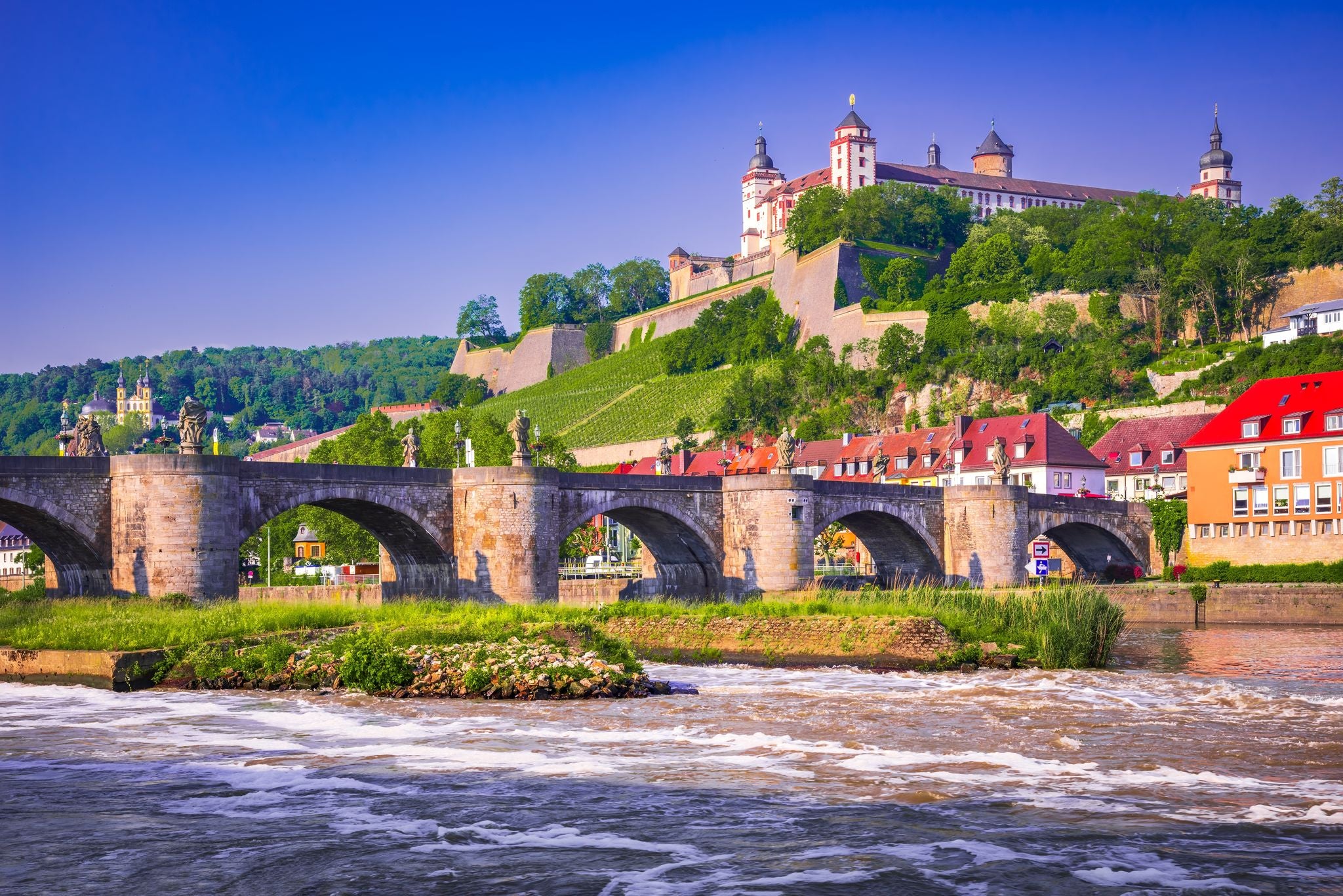
Wurzburg is renowned for its wine culture, especially in spring when vineyards come alive. The terraced hillsides offer panoramic views of the city and the river valley, making it a picturesque destination. A 5-day Germany weekend getaway in Wurzburg allows visitors to explore the stunning landscape, rich history, and local wine culture. The city’s natural beauty and medieval charm make it a perfect retreat.
In spring, Wurzburg hosts the famous Wine Festival (Weindorf), where visitors sample local wines and enjoy Franconian cuisine. The lively atmosphere, complete with music and dancing, adds to the festive spirit. This celebration of local traditions is a must for wine lovers and foodies alike. Wurzburg offers a memorable cultural experience that combines delicious wine, stunning views, and vibrant festivities.
Asparagus Route (Spargelstraße)
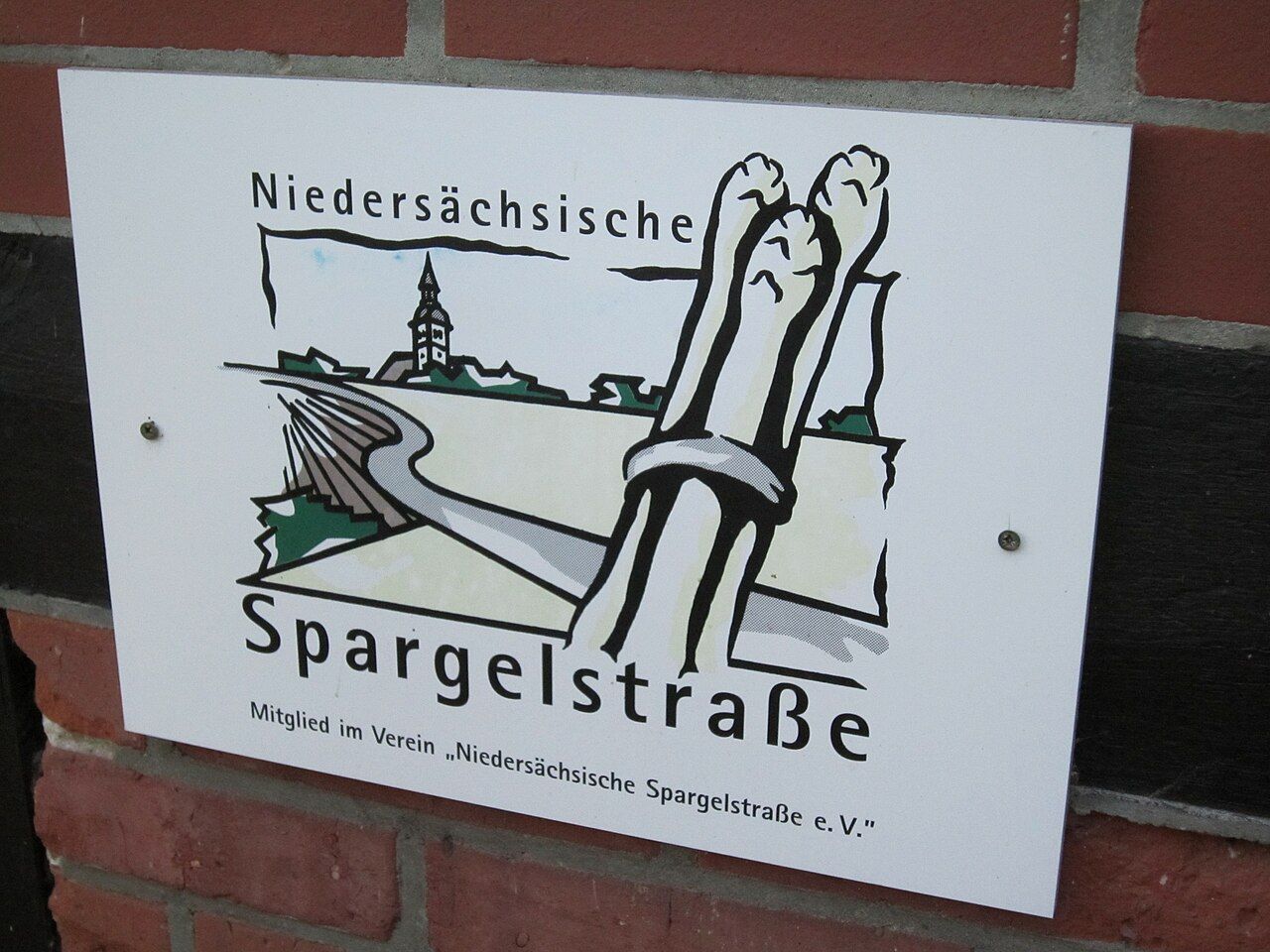
Spring in Bavaria brings a culinary treat with white asparagus (Spargel) at its peak. The Asparagus Route winds through villages like Ingolstadt, Schrobenhausen, and Pfaffenhofen an der Ilm. Local farmers proudly showcase their fresh harvest, offering asparagus dishes at restaurants and roadside stalls. It’s a flavorful journey through Bavaria’s springtime charm.
This is a must-try experience for food lovers, as asparagus season brings a burst of flavor to Bavarian tables. The vibrant countryside provides a stunning backdrop for exploring local markets, where visitors can enjoy seasonal delicacies. Whether you’re tasting tender asparagus with hollandaise sauce or picking up fresh bundles, Bavaria’s Asparagus Route offers an unforgettable taste of spring.
Linderhof Palace Gardens in Spring
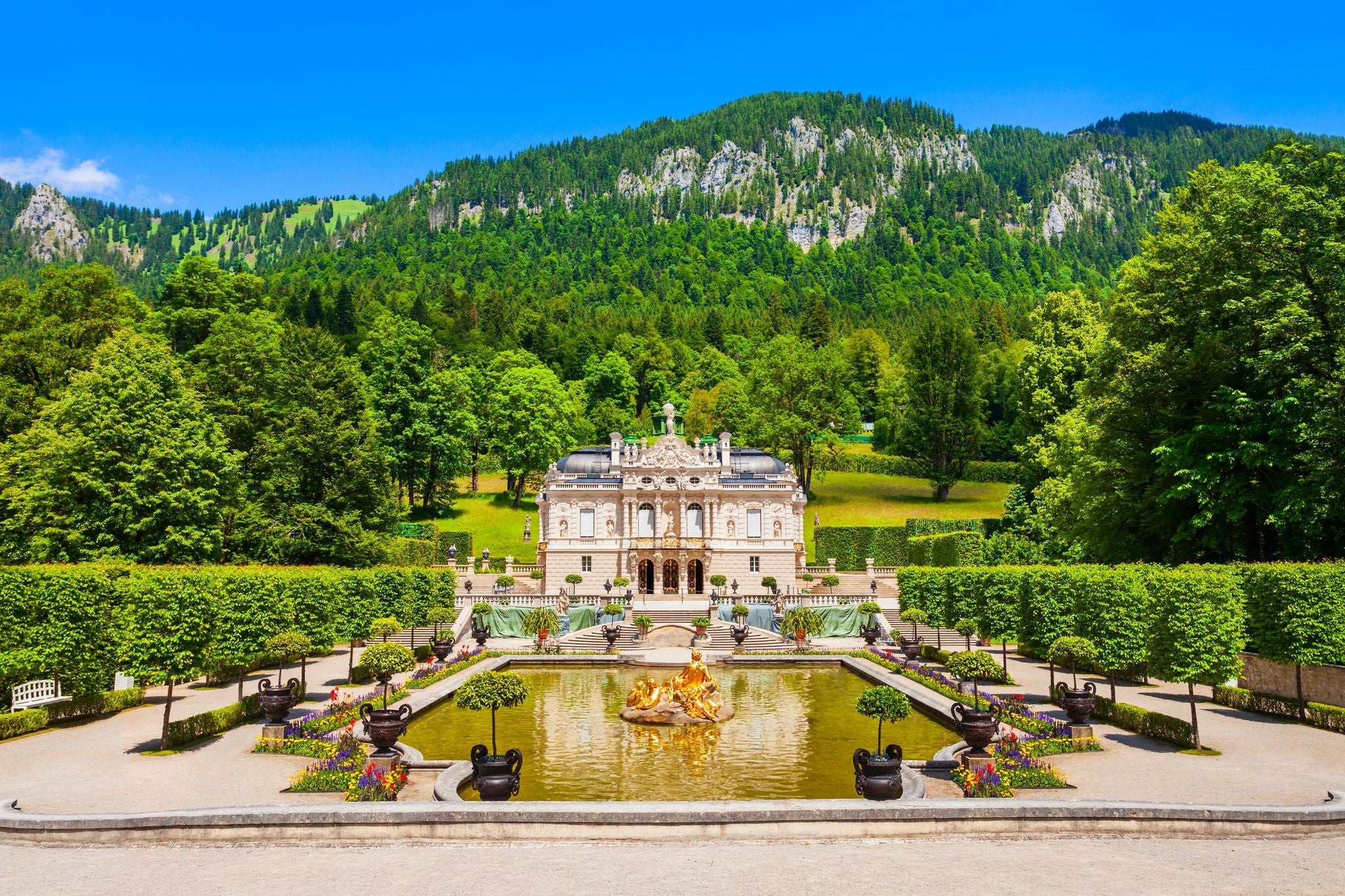
Spring breathes new life into the Baroque gardens of Linderhof Palace, one of King Ludwig II’s stunning residences. Nestled in the Bavarian Alps, these gardens feature vibrant flowerbeds, ornate fountains, and manicured lawns. Snow-capped mountains provide a breathtaking backdrop, making it a serene, romantic spot for springtime strolls. A Neuschwanstein Castle and Linderhof Palace day tour from Munich lets you witness the region’s beauty.
The gardens at Linderhof showcase King Ludwig II’s passion for nature and beauty, especially during spring. The colorful flowers and intricate patterns create a magical setting, while the mountain views enhance the tranquility. This peaceful retreat invites visitors to step back in time and enjoy the elegance of Bavaria’s royal heritage.
Eibsee Lake in Spring

Eibsee Lake is a breathtaking alpine gem at Zugspitze's base. The crystal-clear waters reflect the towering snow-capped peaks and lush spring greenery, creating a picture-perfect scene. Surrounded by dense forests and majestic mountains, this tranquil spot invites visitors to relax and enjoy nature’s beauty. Whether walking along the lakeshore or renting paddle boats, Eibsee offers a serene escape in the Bavarian Alps.
For adventure seekers, Eibsee Lake is a gateway to stunning hikes and viewpoints. Trails lead to panoramic vistas of the lake and the towering Zugspitze, providing unforgettable views. The combination of lush landscapes, shimmering water, and towering mountains make this alpine destination a must-visit in spring. It’s the perfect place to experience the natural splendor of Bavaria.
Tips for Visiting Bavaria in Spring

Visiting Bavaria in spring offers a delightful blend of blooming landscapes, milder temperatures, and cultural festivities. Here are essential tips for travelers planning a springtime visit to this charming region:
Best time to visit Bavaria: Spring (March to May) is the perfect time to visit Bavaria for those looking for pleasant weather, blooming flowers, and fewer crowds. For the best experience, time your visit with the spring festivals and outdoor activities.
Enjoy outdoor activities: As nature awakens in spring, discover Bavaria's stunning landscapes. Hike in the Bavarian Alps, explore Franconian Switzerland, or cycle along scenic routes to experience the blooming scenery.
Visit gardens and castles: Spring highlights Bavaria's gardens, like Herrenchiemsee Palace, Linderhof Palace, and Munich's English Garden, where you can admire vibrant flowers and greenery.
Attend spring festivals: Experience Bavarian culture at spring festivals like the Munich Spring Festival and May Day celebrations, featuring traditional music, dancing, local cuisine, and beer gardens.
Pack layers: Bavarian spring weather can be unpredictable, so pack layers like a light jacket, sweater, and comfortable shoes. Expectations for occasional rain showers in early spring are prudent.
Explore cultural attractions: Visit museums, historic towns like Rothenburg ob der Tauber, and UNESCO sites like Regensburg's Old Town. Spring is a quieter time for these attractions than the busy summer.
Book accommodations early: Although spring has fewer tourists than summer, popular destinations can still fill up quickly. Booking accommodations in advance is advisable.
Sample seasonal cuisine: Enjoy seasonal white asparagus (Spargel) in Bavaria, paired with Franconian wines or Bavarian beers in sunny beer gardens.
Is Summer the Best Time to Visit Bavaria?

Summer in Bavaria lasts from June to August and offers warm weather, cultural festivals, and outdoor activities. Temperatures range from 68 F to 77 F (20 C to 25 C), with July being the warmest month. The pleasant weather is perfect for exploring charming cities and the picturesque countryside, and it’s an ideal time to enjoy Bavaria’s natural beauty and vibrant culture.
Crowds in Bavaria during summer can vary depending on the location and popular events. Cities like Munich and Nuremberg see more tourists, especially during major festivals like the Munich Opera Festival in July. The Nuremberg Bardentreffen Music Festival in August also draws large crowds, showcasing vibrant cultural experiences. These events make summer an exciting time to visit Bavaria.
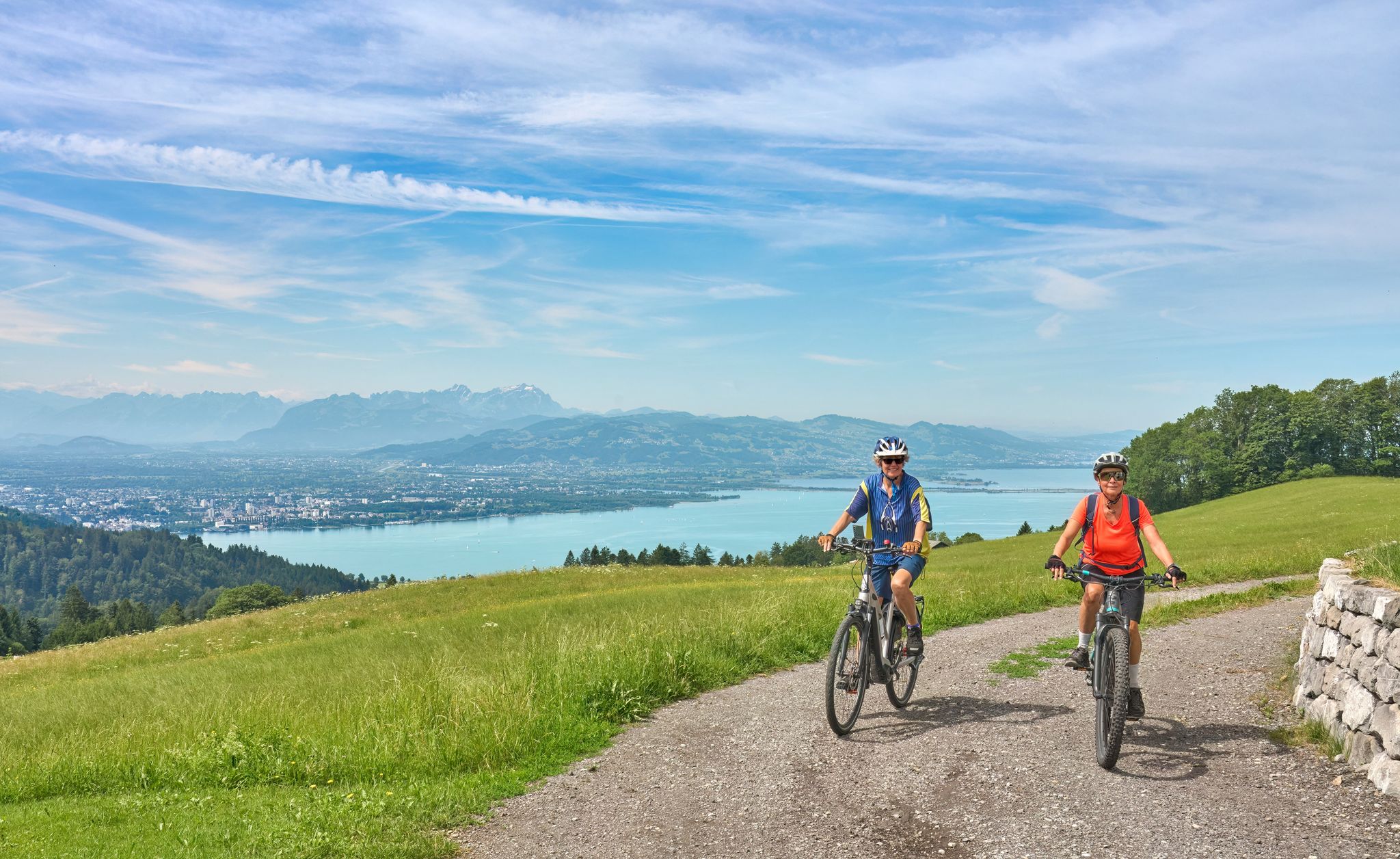
Costs in Bavaria during the summer can also reflect the higher demand for accommodation, particularly in tourist hotspots and festivals. However, traveling earlier in June or later in August can sometimes offer slightly lower prices than peak July travel dates.
During summer, the best time to visit Bavaria is generally from late June to early August. It offers the most favorable weather for outdoor activities. Whether exploring historic cities, attending cultural festivals, or relaxing by Bavaria's lakes, summer offers a scenic backdrop for an enriching travel experience in southern Germany.
Best Places to Visit in Bavaria in Summer
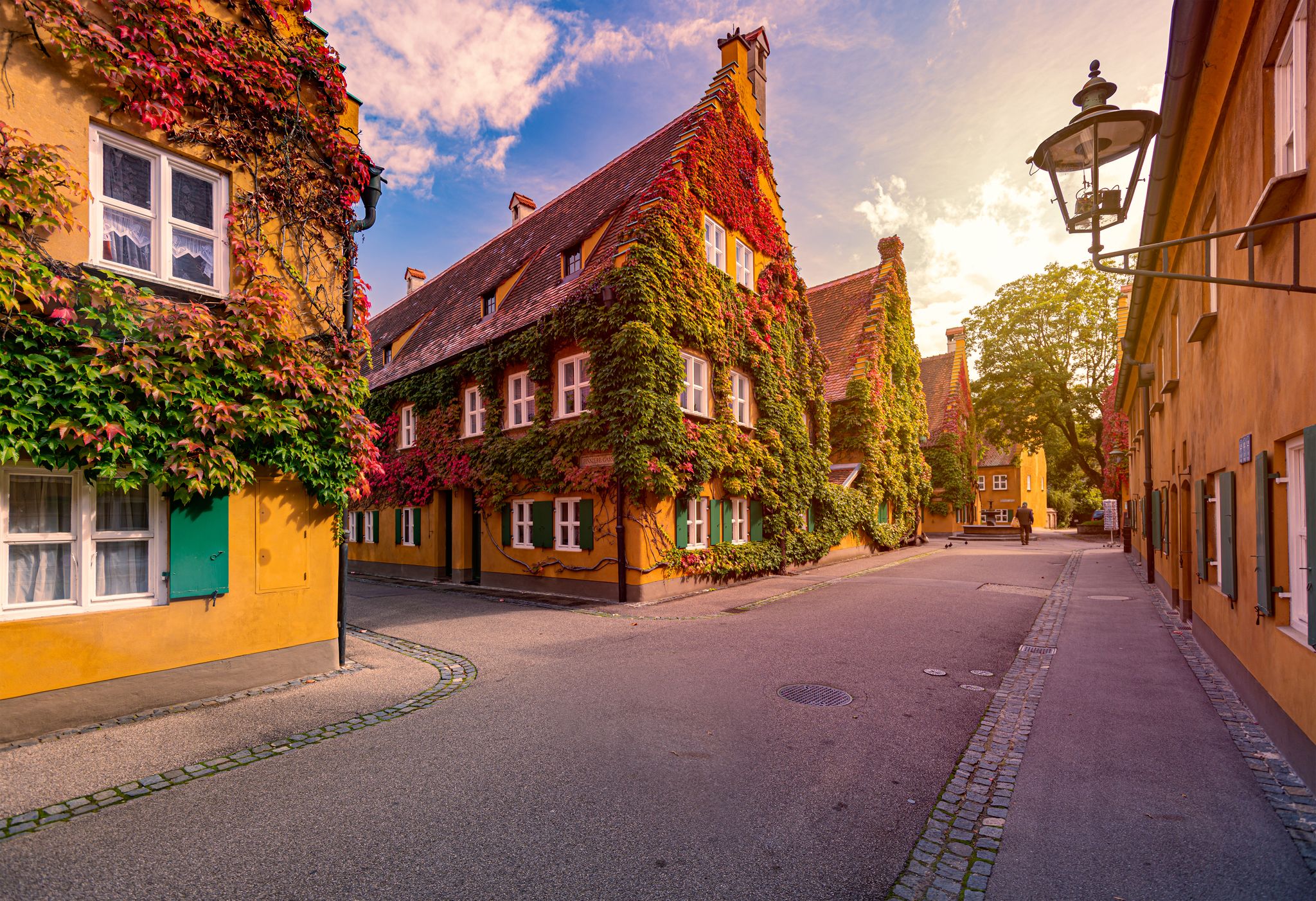
In Bavaria, summer unveils many unique attractions and experiences highlighting the region's cultural richness and natural beauty. Here are some of the best places to visit in Bavaria in summer.
Bavarian Alps in Summer
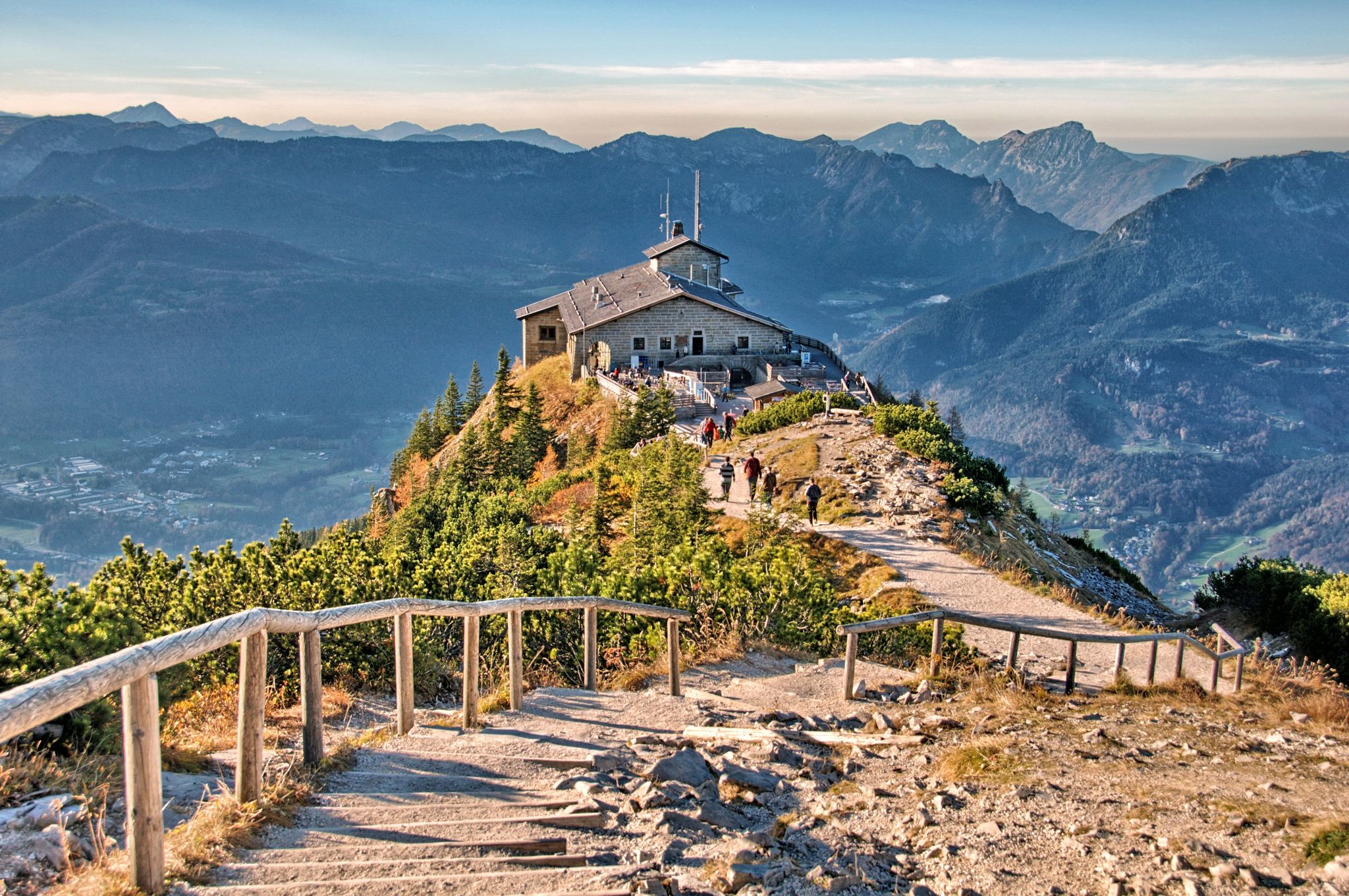
The Bavarian Alps are a paradise for outdoor enthusiasts. Whether you enjoy hiking through lush meadows, climbing rugged peaks, or driving along scenic mountain roads, this region offers something for everyone. From snow-capped summits to crystal-clear lakes, the beauty is breathtaking in every direction.
One of the region's crown jewels is Zugspitze, Germany's highest peak. Consider visiting the highest peak by joining the Zugspite day tour from Munich. Accessible by cable car or hiking trails, it offers panoramic views of the surrounding mountains and valleys. Standing atop Zugspitze, you'll feel on top of the world, surrounded by the majestic Alps and endless horizons.
Munich's Beer Gardens in Summer

Experience Munich’s vibrant beer garden culture, where locals and tourists gather to enjoy the best of Bavarian hospitality. The Hofbrauhaus and Englischer Garten are iconic spots where you can relax beneath chestnut trees, savoring hearty dishes like pretzels, sausages, and schnitzels. The lively atmosphere makes these beer gardens a perfect place to unwind after a day of sightseeing.
For a deeper taste of the city's culinary delights, a Bavarian beer and evening food tour in Munich is a must. This guided tour will introduce you to the city’s best beer halls and authentic evening meals. As you sip on locally brewed beers and sample traditional Bavarian fare, you'll learn about the region’s rich brewing history and food culture.
Romantic Road in Summer

Embark on a journey along the famed Romantic Road, one of Germany's most picturesque routes. Whether you drive or cycle, the road winds through charming medieval towns, lush vineyards, and magnificent castles, offering a perfect blend of nature and history. Each stop reveals hidden gems, from cobblestone streets to breathtaking landscapes.
A Romantic Road, Rothenburg, and Harburg day tour from Munich brings you closer to the region's enchanting heritage. Explore the fairytale town of Rothenburg ob der Tauber, with its well-preserved medieval architecture and vibrant market squares. Visit the stunning Wurzburg Residence, a UNESCO World Heritage site, and discover Harburg Castle, a centuries-old fortress offering panoramic views of the surrounding countryside.
Bavarian Lakes in Summer
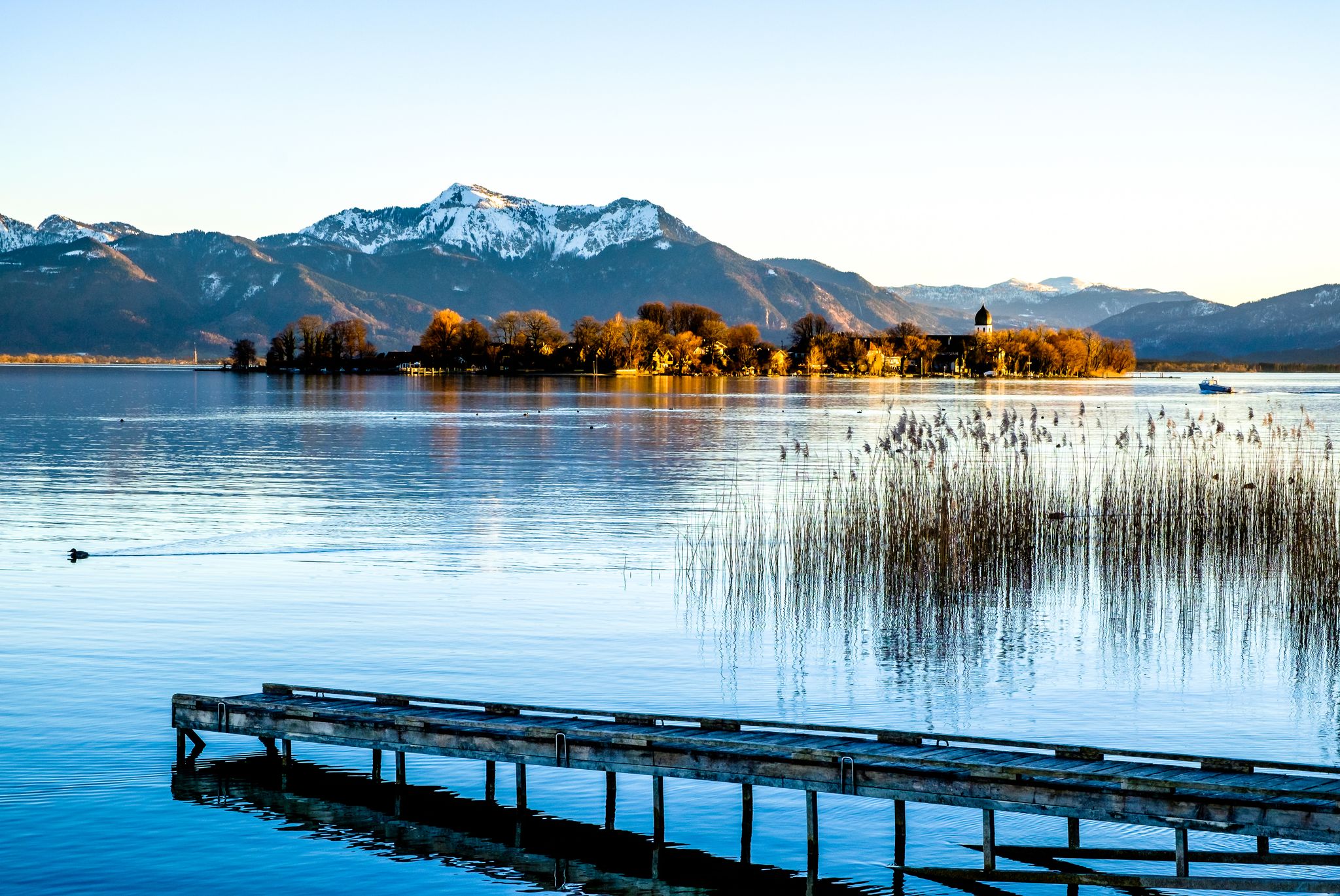
Bavaria’s lakes are a true haven for nature lovers, offering crystal-clear waters and breathtaking alpine backdrops. Lake Chiemsee, known as the "Bavarian Sea," invites you to explore its islands, swim, or enjoy a boat ride. Lake Tegernsee and Lake Starnberg, surrounded by lush greenery and towering mountains, provide a tranquil setting perfect for relaxation and outdoor activities.
A Romantic Road and Bavarian Lakes multi-day cycling tour from Augsburg offers a unique way to experience this stunning region. As you cycle through charming villages and picturesque landscapes, you’ll pass serene lakes and scenic trails that lead to hidden gems. This journey allows you to swim, boat, and soak in the beauty of Bavaria while discovering its rich culture and history.
Regensburg's Old Town in Summer
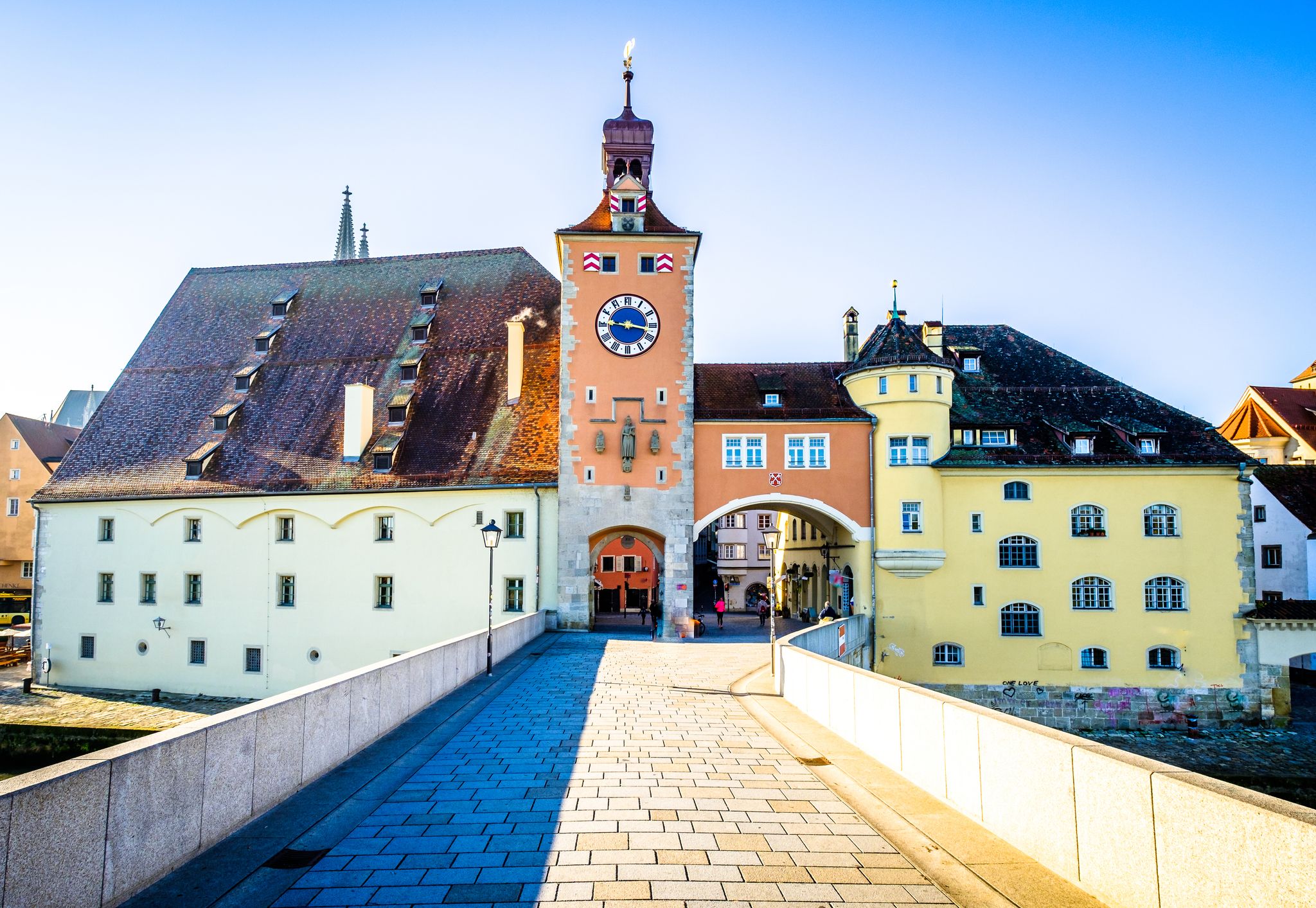
Regensburg’s Old Town is a captivating blend of medieval history and vibrant culture, making it a must-see destination. In the summer, the narrow cobblestone streets come alive with outdoor cafes, bustling markets, and street performers. The town boasts beautifully preserved buildings, from Romanesque churches to grand Gothic structures, creating a picturesque atmosphere that transports visitors back in time.
A classic guided historic tour in Regensburg allows you to explore these remarkable sights with an expert guide. The tour takes you to the awe-inspiring Cathedral of St. Peter, the Stone Bridge over the Danube, and other historic landmarks. As you wander through this UNESCO World Heritage-listed Old Town, you’ll discover Regensburg’s fascinating past and vibrant present.
Tips for Visiting Bavaria in Summer

Visiting Bavaria in summer offers travelers sunny weather, lively festivals, and ample opportunities for outdoor adventures. Here are essential tips for planning a summer trip to this picturesque region:
Best time to visit Bavaria: Summer (June to August) is the peak tourist season in Bavaria, thanks to warm weather and long days. Plan your visit around festivals or enjoy outdoor activities in beautiful landscapes.
Enjoy outdoor activities: Enjoy Bavaria's scenic beauty by hiking in the Alps, cycling by lakeshores, or swimming in crystal-clear lakes like Chiemsee and Tegernsee. Summer is perfect for exploring the region's natural wonders.
Visit Bavarian castles and gardens: Visit fairytale castles like Neuschwanstein and Herrenchiemsee and enjoy the blooming gardens at Linderhof Palace, which are incredibly picturesque in summer.
Attend summer festivals: Experience Bavarian culture through festivals like the Wagner Festival in Bayreuth, the Ettal Passion Play, and the Coburg Samba Festival, featuring traditional music, dance, and cuisine.
Pack light and comfortable: Bavarian summers can be warm, so pack lightweight clothing, sunscreen, sunglasses, a hat, and sturdy walking shoes for exploring historic towns.
Explore city life: Visit vibrant cities in Bavaria, including museums and historic landmarks. Each town offers something different for visitors, making exploring exciting and magical. Consider taking a two-hour walking tour in Nuremberg or a half-day sightseeing bike tour in Munich.
Book accommodations early: Summer brings a large influx of tourists, especially to popular destinations and during major events. Secure accommodations in advance to ensure availability and get the best rates.
Stay hydrated and plan: Bring a reusable water bottle to stay hydrated, especially outdoors. Plan your itinerary to include indoor attractions or shaded areas during peak heat.
Is Autumn the Best Time to Visit Bavaria?
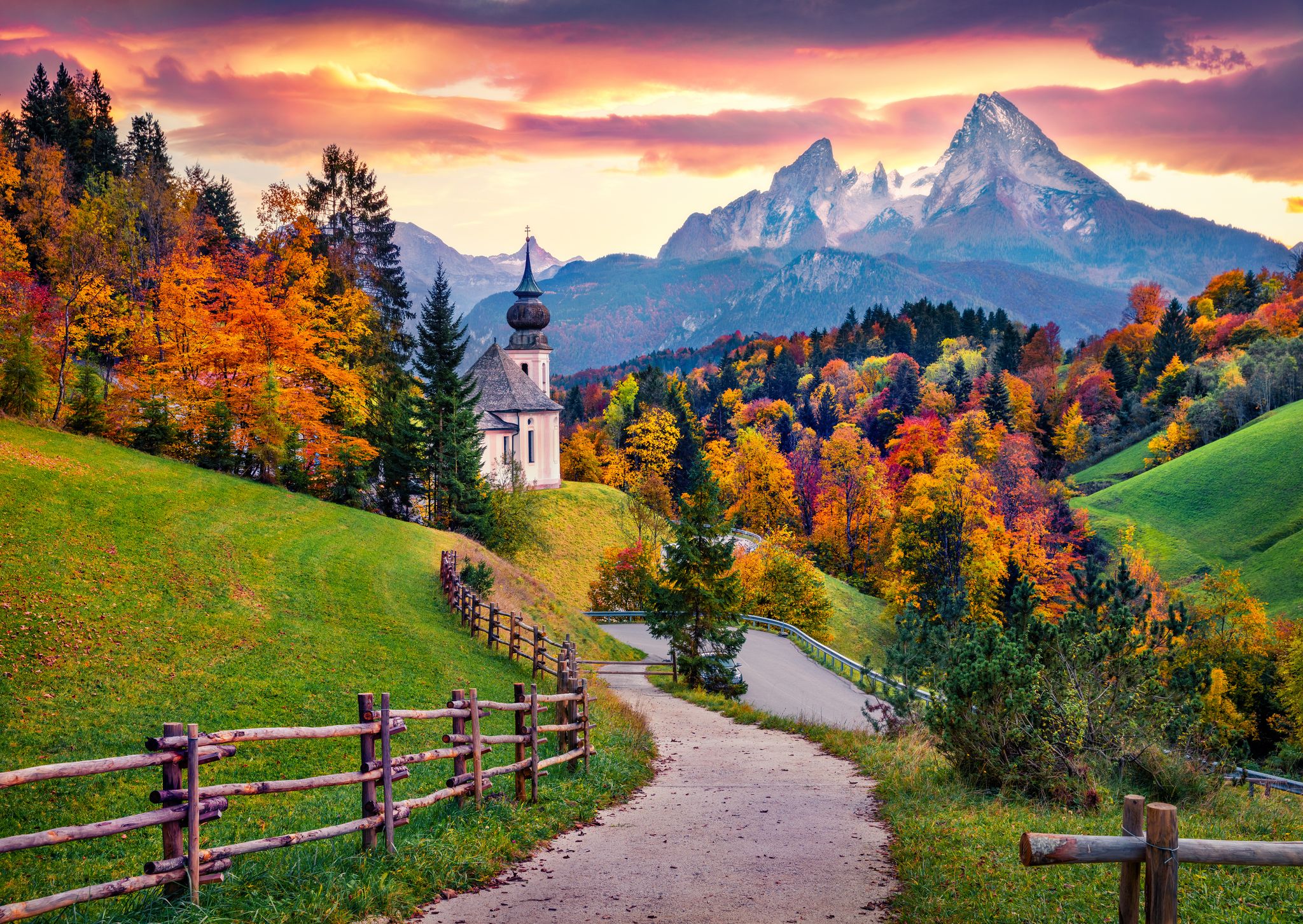
Autumn is the best time to visit Bavaria for travelers seeking a blend of landscapes, cultural richness, and moderate tourism activity. It offers an enchanting experience amidst its picturesque autumnal beauty.
Autumn in Bavaria spans from September to November. During autumn, Bavaria transitions from the lingering warmth of summer to cooler temperatures typical of early winter. September sees average daytime temperatures ranging from 59 F to 68 F (15 C to 20 C). These conditions offer pleasant weather for exploring outdoor attractions like the Bavarian Alps and vineyards.
As October progresses, temperatures cool to 50 F to 59 F (10 C to 15 C), perfect for hiking in autumn. The region’s stunning foliage adds to the beauty, making outdoor exploration unforgettable. By November, temperatures drop to 41 F to 50 F (5 C to 10 C), signaling winter’s arrival. This chill creates a cozy ambiance for visiting Bavaria’s historic cities and festive markets.
Autumn in Bavaria is enchanting, with vibrant golden, red, and orange foliage, perfect for sightseeing. The grape harvest season adds charm, with active vineyards and scenic wine routes in Franconia. Fewer tourists in autumn offer a more intimate experience at popular sites like Neuschwanstein Castle and Munich’s Oktoberfest.
Best Places to Visit in Bavaria in Autumn
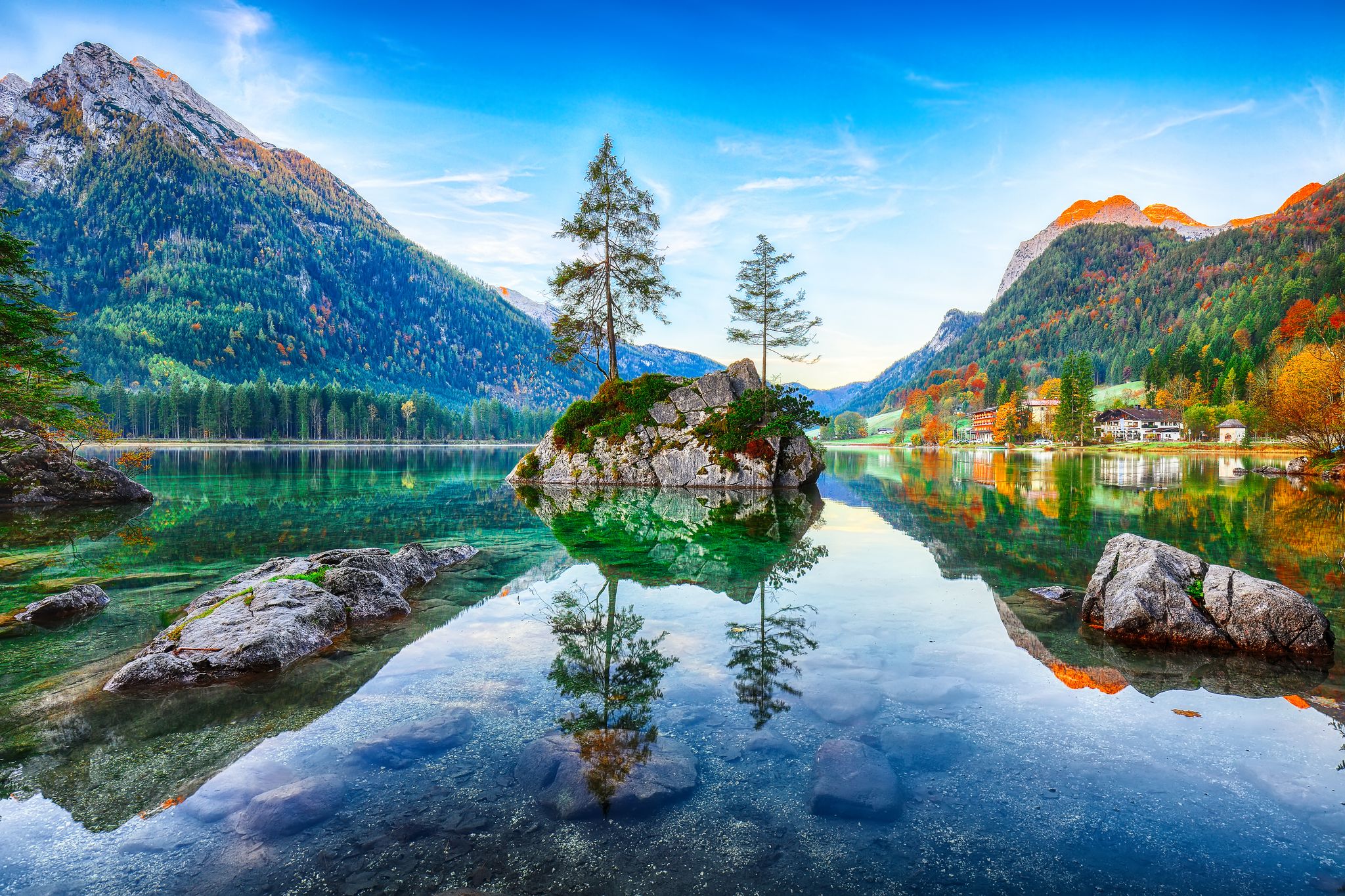
In autumn, Bavaria showcases its cultural heritage, natural beauty, and seasonal festivities, offering a memorable experience. Here are the must-attend festivals and the best places to visit in Bavaria in autumn.
Oktoberfest in Munich in Autumn
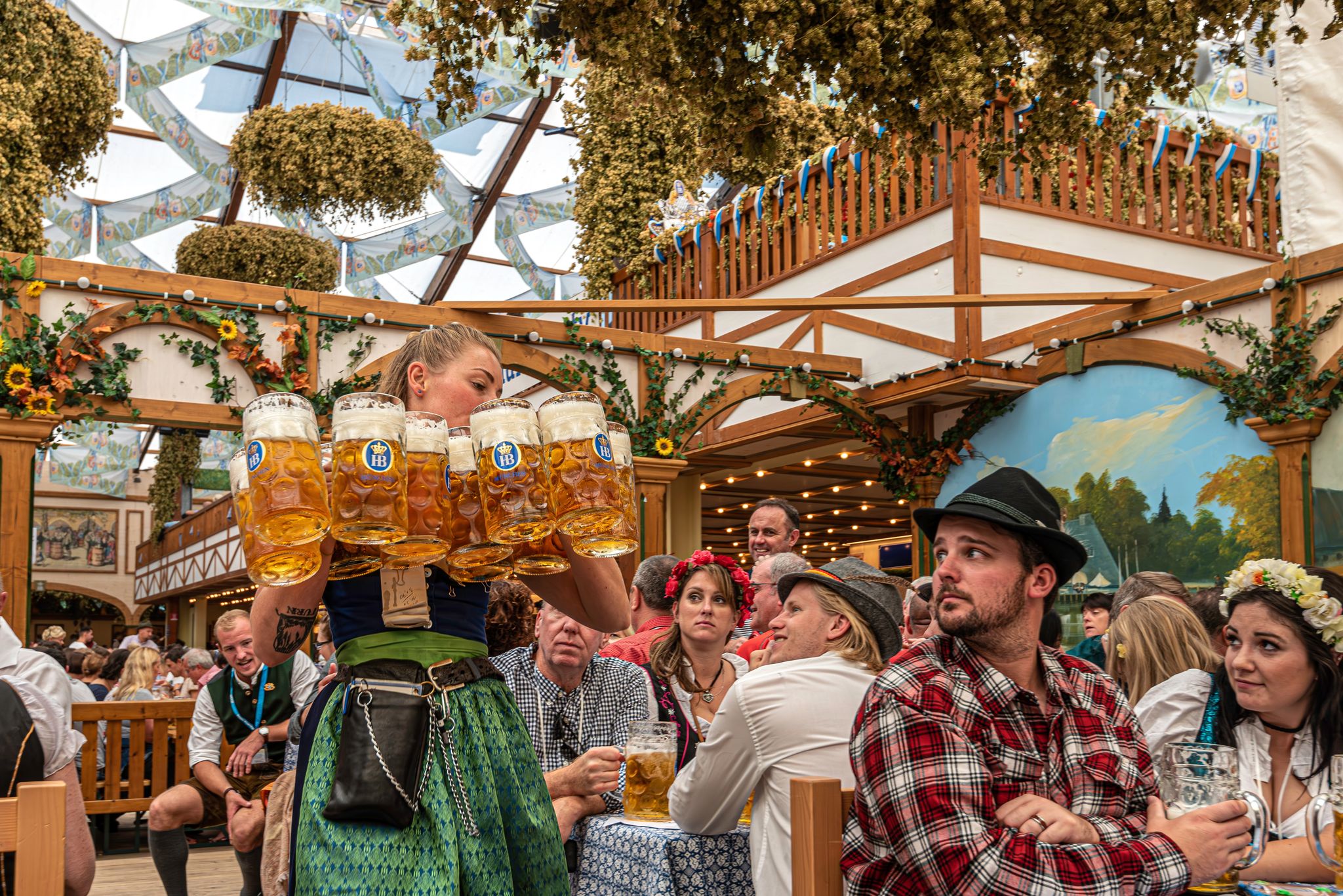
Autumn in Bavaria is a season filled with vibrant celebrations and unforgettable experiences, starting with the legendary Oktoberfest. Held from late September to early October, this world-renowned beer festival draws millions of visitors to Munich. The Theresienwiese fairgrounds come alive with colorful parades, lively music, and the aroma of traditional Bavarian cuisine.
A city walk and Oktoberfest tour with beer tent reservation in Munich lets you immerse yourself in the heart of the festival. Enjoy a guided stroll through Munich's charming streets before heading to the iconic beer tents. Savor local brews, indulge in hearty dishes, and experience the lively atmosphere, all while skipping the long lines with your reserved seat.
Franconian Wine Harvest Festivals in Autumn
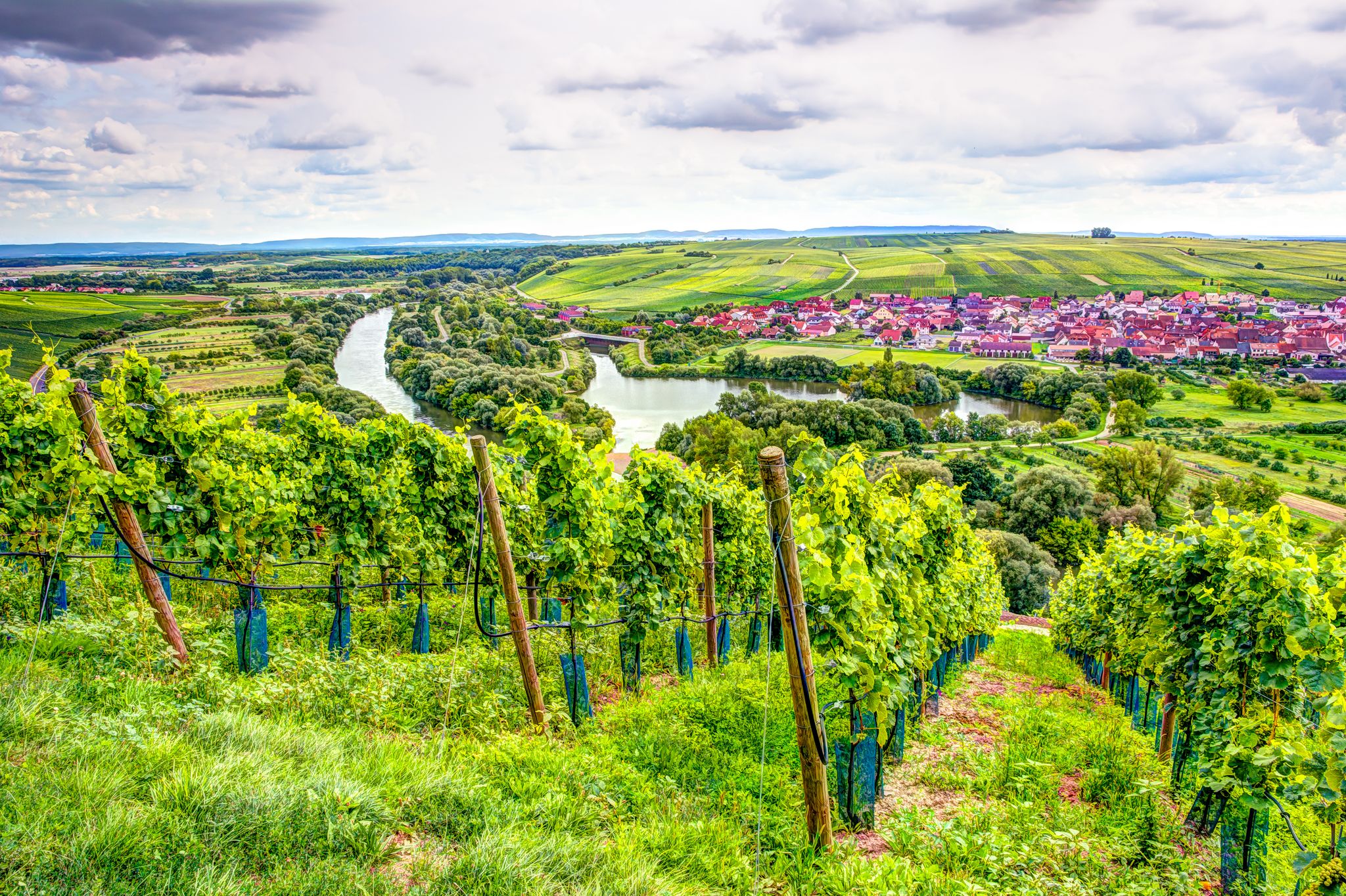
Autumn in Franconia brings the exciting grape harvest season, known as Weinlese, especially in towns like Wurzburg and Volkach. The region’s rolling vineyards are vibrant with activity, as locals and visitors celebrate the fruits of the season. Wine festivals light up the towns, offering wine tastings, delicious local dishes, and guided tours through picturesque vineyards along scenic wine routes.
A 9-day Germany city break in Wurzburg lets you fully immerse yourself in this rich cultural experience. Discover the beauty of the region's Baroque architecture and historical landmarks while enjoying the harvest festivities. Stroll along the Main River, explore quaint wine villages, and enjoy the stunning autumn scenery as you savor the finest local wines and traditional Bavarian cuisine.
Berchtesgaden National Park in Autumn
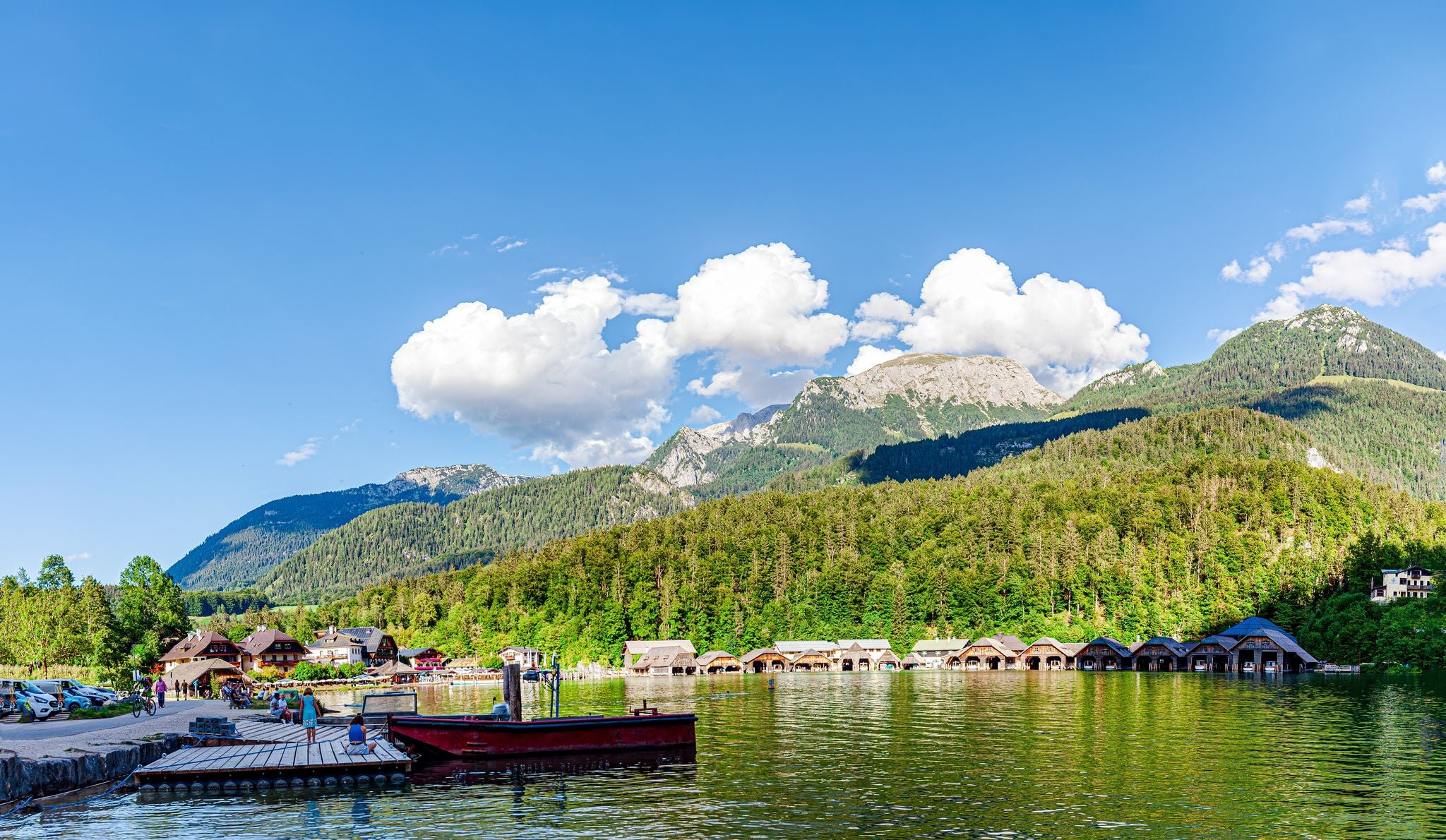
Berchtesgaden National Park in autumn is a true natural wonder, with vibrant foliage transforming the landscape into a stunning canvas. Hike along scenic trails that wind through forests of red, gold, and amber leaves, offering breathtaking views of the surrounding alpine peaks. The park’s tranquility and beauty make it the perfect destination for outdoor enthusiasts and nature lovers.
After exploring the national park, you can embark on the Eagle's Nest, Lake Konigssee, and Fuhrer Headquarters private tour from Munich. This guided tour takes you to the historic Eagle’s Nest, perched above the valley, offering panoramic views. You’ll also visit the Führer Headquarters and enjoy the serene beauty of Lake Konigssee, rounding out your autumn adventure.
Regensburg's Dult Fairs in Autumn

The Dult fairs in Regensburg are a lively celebration of Bavarian culture, offering a unique blend of fun and tradition. The Maidult, held in April and May, starts the fair season with vibrant festivities featuring amusement rides, food stalls, and local crafts. Visitors can enjoy traditional Bavarian entertainment, such as folk music while exploring the colorful market stands.
The Herbstdult, held in September and October, embraces the essence of autumn with a festive atmosphere and local delicacies. This autumn fair offers an exciting mix of rides, hearty food, and Bavarian specialties, from pretzels to sausages. The Herbstdult is a perfect opportunity to enjoy the cool autumn air, savor delicious seasonal treats, and experience Bavarian traditions in a lively, welcoming setting.
Bamberg in Autumn
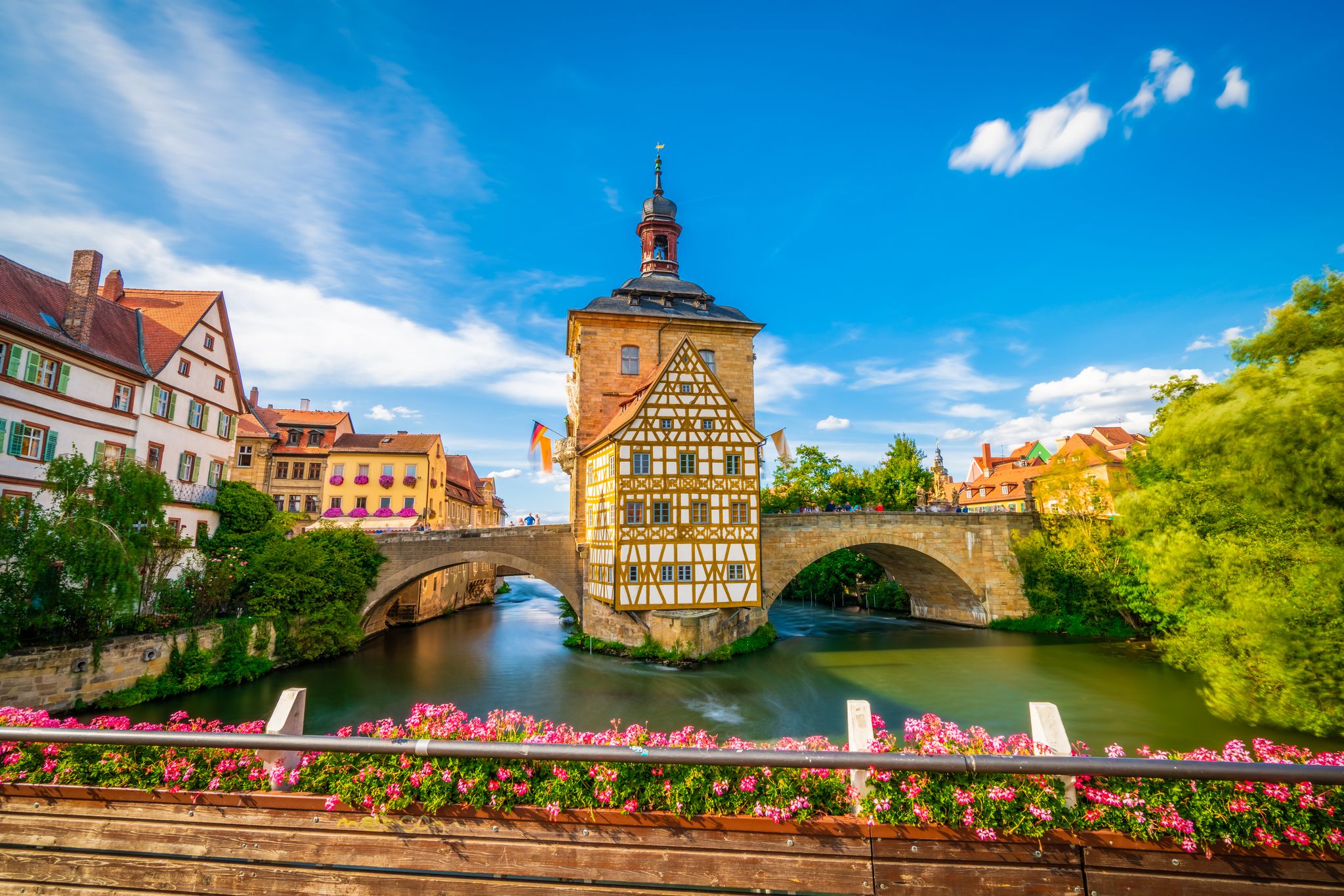
Bamberg is a charming medieval town that comes alive in autumn with vibrant foliage and crisp air. The historic buildings and narrow streets, covered in golden leaves, create a picturesque backdrop for exploration. As you stroll through this UNESCO World Heritage city, you’ll discover its beautiful architecture and quaint squares, perfect for a peaceful autumn escape.
To truly experience Bamberg’s beauty, take a 2-hour guided private walking tour in Bamberg. Your expert guide will lead you through the town’s highlights, including the stunning Bamberg Cathedral and the old town hall. With personalized attention, you'll learn about the city's rich history and vibrant culture while enjoying the sights of autumn.
Tips for Visiting Bavaria in Autumn
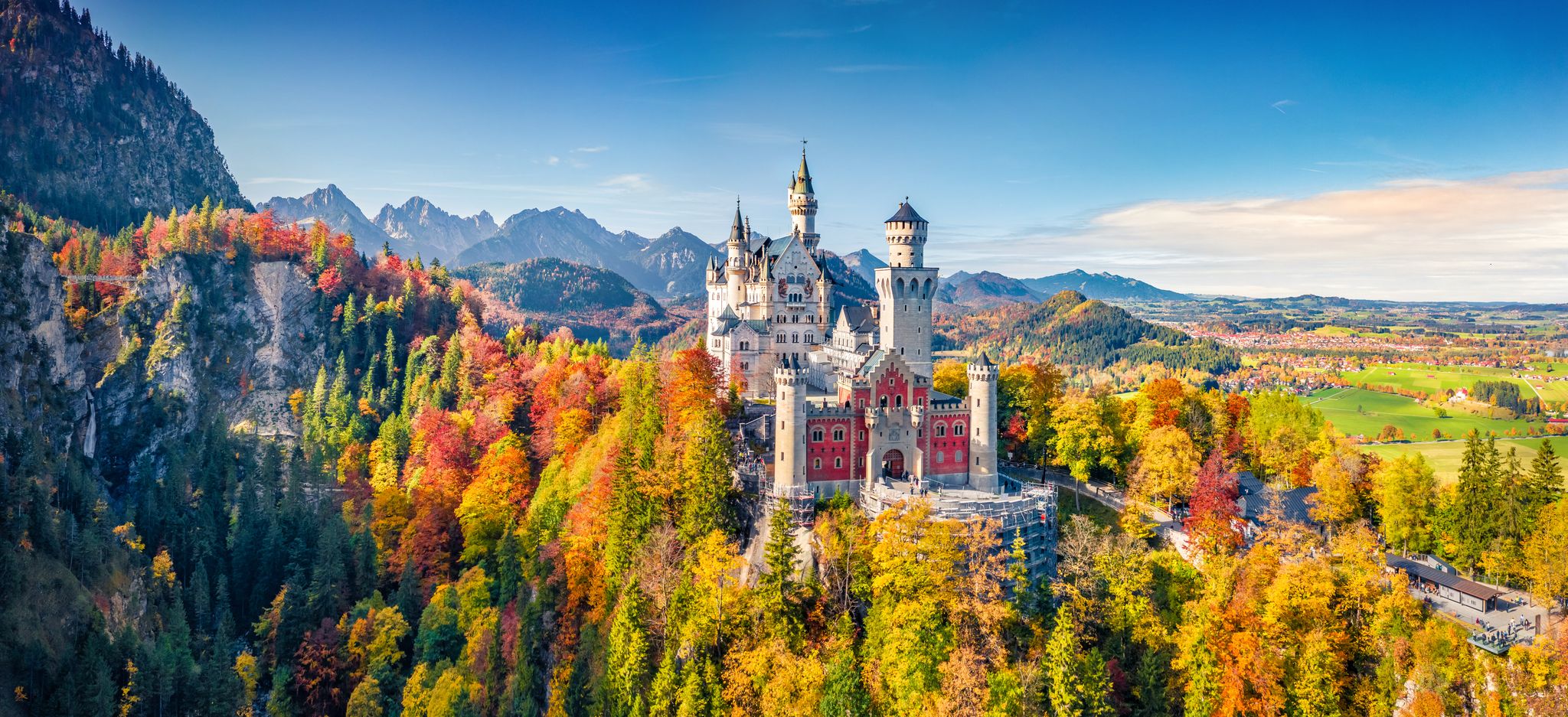
Visiting Bavaria in autumn offers a charming blend of colorful landscapes, cultural events, and seasonal delights. Here are essential tips for travelers planning a fall trip to this picturesque region:
Best time to visit Bavaria: Autumn (September to November) is the ideal time to visit Bavaria for beautiful fall foliage, mild weather, and fewer crowds. Time your visit with wine festivals, harvest celebrations, and Munich's Oktoberfest.
Enjoy autumn foliage: Discover Bavaria's countryside, including the Bavarian Alps and Franconian Switzerland, where vibrant autumn colors enhance the scenery. Hike trails around Lake Konigssee and Berchtesgaden National Park offer stunning views.
Visit historic towns and castles: Discover Bavaria's rich history by visiting medieval villages such as Rothenburg ob der Tauber and Regensburg. Explore fairytale castles like Neuschwanstein and Hohenschwangau, surrounded by autumnal scenery.
Attend Oktoberfest and other festivals: Experience Bavarian culture at Oktoberfest in Munich or local festivals featuring wine, beer, and regional traditions. Enjoy seasonal cuisine, music, and traditional dances.
Pack layers and weatherproof gear: Bavarian weather in autumn can be unpredictable, so pack layers, including sweaters, a waterproof jacket, comfortable walking shoes, and an umbrella. Be prepared for cooler mornings and evenings.
Enjoy seasonal cuisine: Enjoy Bavarian specialties like hearty stews, roasted meats, and pumpkin dishes. Don’t miss local Franconian wines or Bavarian beers in cozy, autumn-decorated beer gardens.
Book accommodations in advance: Autumn sees a moderate influx of tourists, particularly during Oktoberfest and peak foliage season. Secure accommodations early to ensure availability and to take advantage of seasonal discounts.
Where is Bavaria?
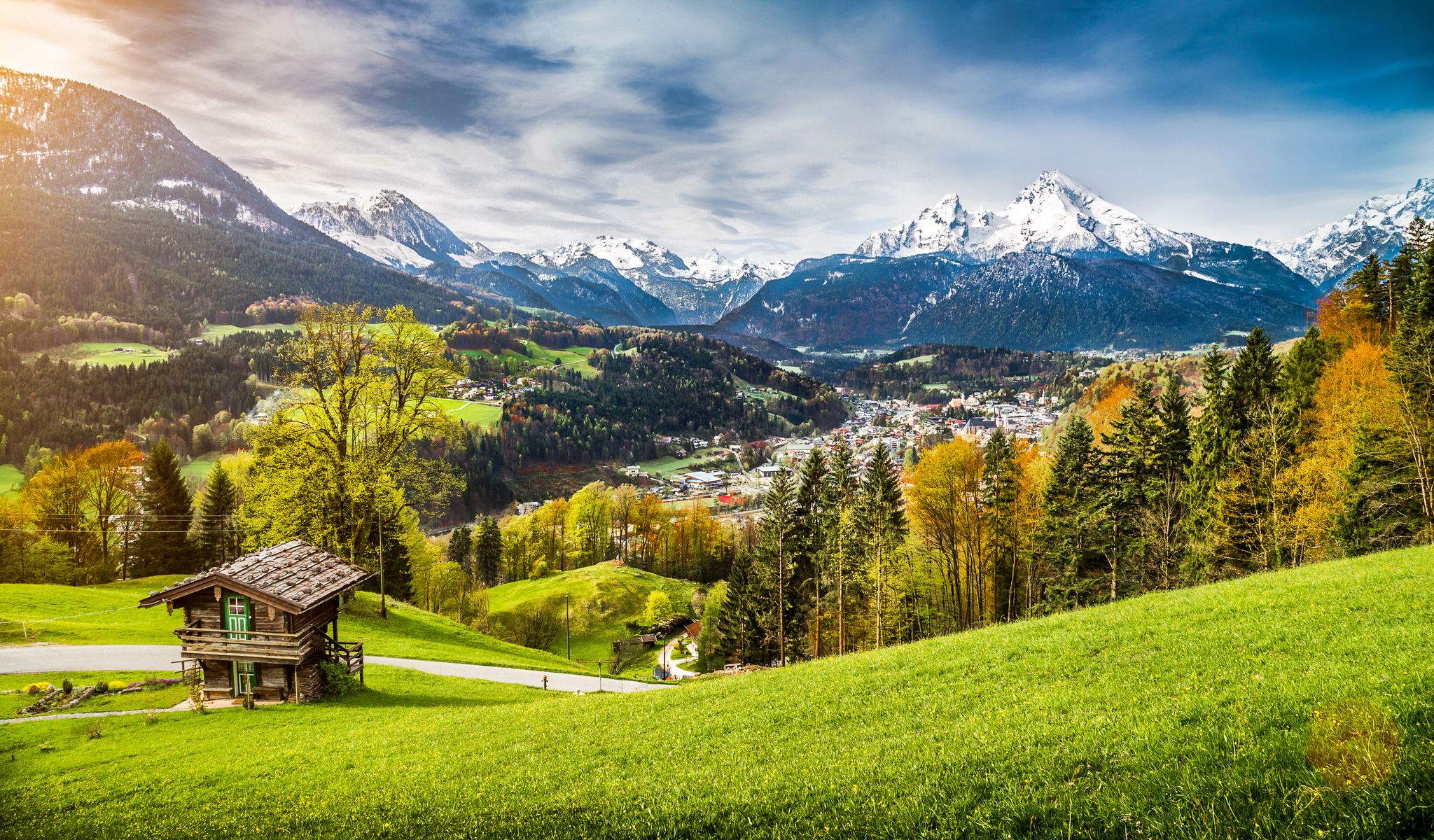
Bavaria (Bayern) is the largest federal state in Germany by area and is situated in the country's southeastern part. It is known for its rich cultural heritage, stunning landscapes, and significant historical events.
Celtic tribes initially inhabited Bavaria before becoming part of the Roman Empire. The region boasts a rich historical background, including the medieval Duchy of Bavaria and later the Kingdom of Bavaria.
The region is located in southeastern Germany. To the east, it’s bordered by Austria and the Czech Republic. To the north and west, it shares borders with Hesse, Baden-Wurttemberg, and Saxony. Bavaria is divided into three major regions: the Alpine Region, Franconia, and Swabia.
Bavaria boasts many attractions and experiences, from bustling cities to serene alpine landscapes. Its stunning natural beauty, rich history, and dynamic culture are showcased in places like Neuschwanstein Castle, Nymphenburg Palace, and Chiemsee.
How To Get To Bavaria?
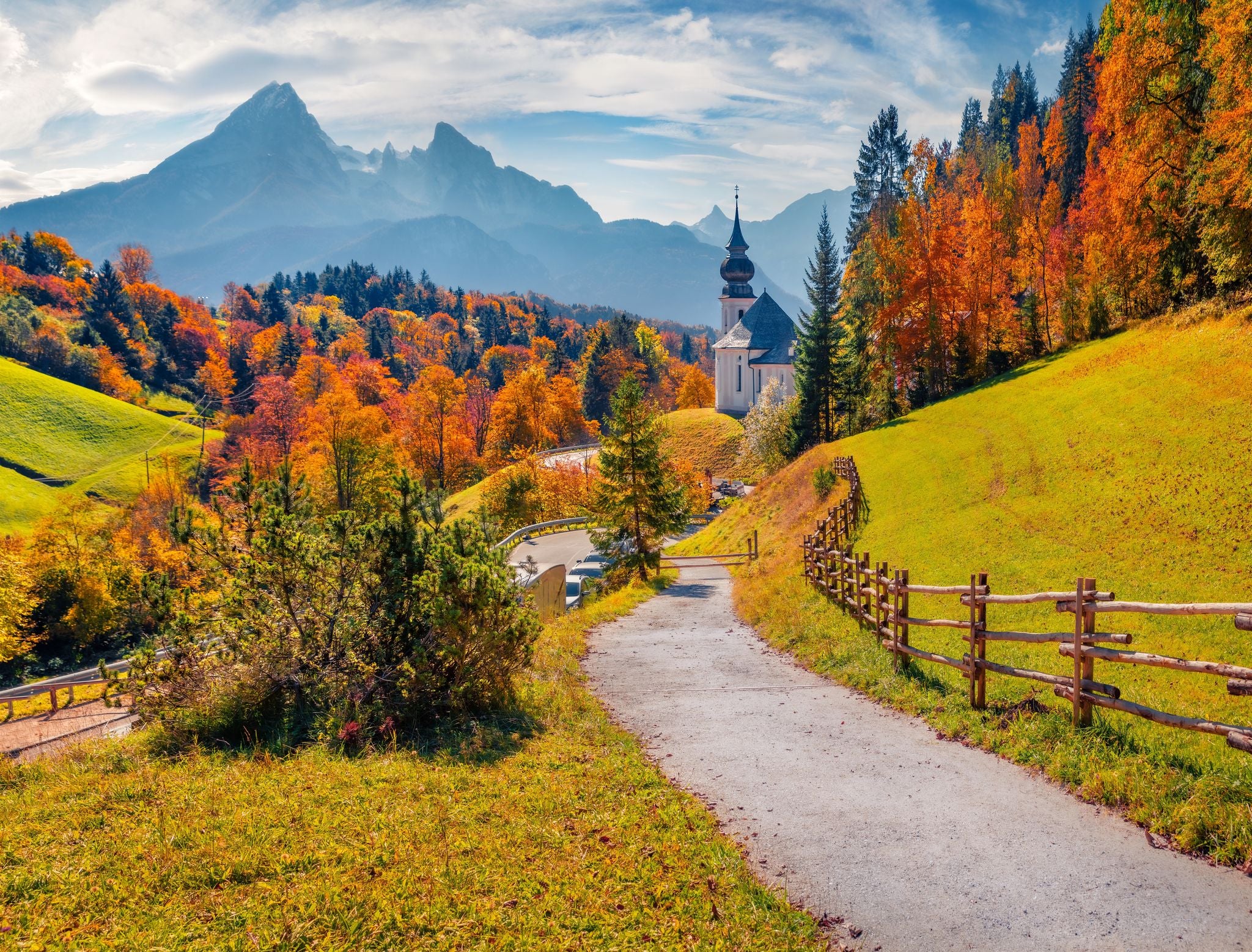
Bavaria's central location in Europe and outstanding transportation system make it easy to reach. With convenient air, rail, and road options, reaching Bavaria from neighboring countries and major cities is straightforward. The region offers well-connected travel routes, ensuring easy access for domestic and international travelers.
By Air: Flights to Munich are available to get to Bavaria by air, with the main international gateway being the Munich Airport, a central hub for international and domestic flights. Nuremberg and Memmingen airports also offer domestic flights to Bavaria and some European destinations. You can easily reach other Bavarian cities from Munich by train, car, or domestic flight.
By Train: You can easily reach Bavaria by booking train tickets to Munich, a major city in the region. Germany’s extensive railway network connects significant cities within the country and neighboring countries like Austria, Switzerland, and the Czech Republic. This efficient system offers convenient transportation for travelers exploring Bavaria.
By Car: Bavaria can be easily reached by car from different parts of Germany and neighboring countries, as there are various routes available for drivers to choose from. Additionally, if you’re coming from other regions of Germany, you can also drive to Bavaria. With the largest selection of rental cars in Germany, you can easily venture on a road trip to Bavaria!
By Bus: Long-distance buses operated by various companies provide an affordable option for traveling to Bavaria from major cities in Germany and neighboring countries. Popular routes include Munich, Nuremberg, and Augsburg.
Where to Stay in Bavaria?
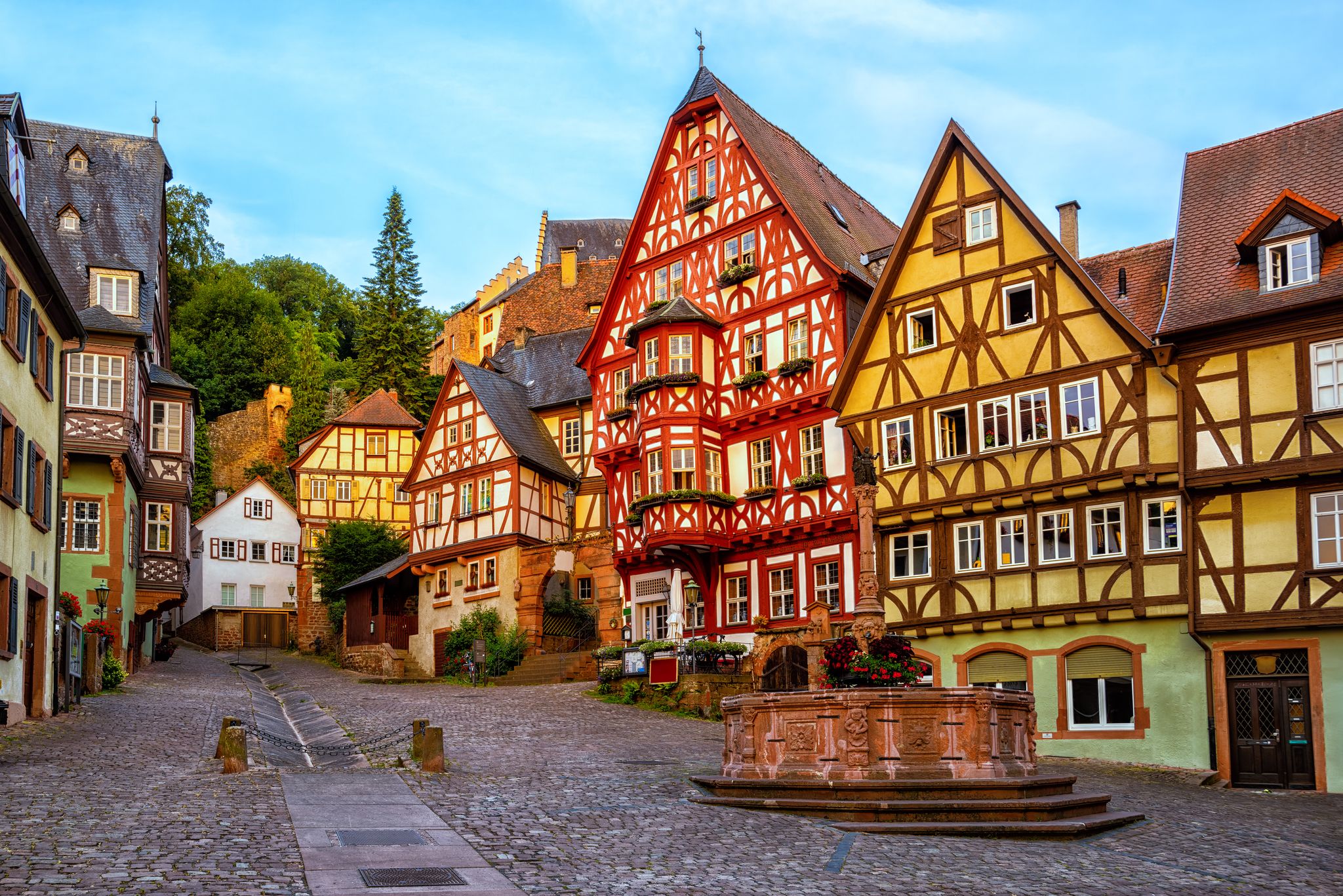
Accommodations in Bavaria cater to a wide range of preferences and budgets, offering visitors various options, from cozy guesthouses and charming bed-and-breakfasts to luxury hotels and resorts. Each season presents unique considerations for choosing accommodations that enhance the overall travel experience.
Bavaria in Winter: During winter, accommodations in Garmisch-Partenkirchen and Berchtesgaden offer easy access to winter sports. These accommodations provide stunning alpine views and a range of cozy lodging options. Meanwhile, accommodations in Munich and Nuremberg are near festive markets and indoor attractions, with options for every budget.
Bavaria in Spring: Accommodations in Bavaria during spring often offer lower rates compared to the summer peak season, making it a great time to find deals on hotels and guesthouses. Regions like Franconia and the Bavarian Alps provide scenic settings for enjoying the awakening nature.
Bavaria in Summer: In summer, Bavaria offers diverse accommodations, from Munich’s bustling hotels to peaceful lakeside resorts like Chiemsee and Tegernsee. The Romantic Road towns also provide charming guesthouses, perfect for exploring Bavarian history. However, summer is the peak season, and prices rise in popular destinations. It’s recommended that you book accommodations in advance to secure the best options.
Bavaria in Autumn: As tourist crowds taper off, accommodations in Bavaria during autumn often offer seasonal discounts. This is an excellent time to explore wine regions like Franconia or enjoy cultural festivals such as Oktoberfest in Munich. Accommodations range from charming countryside inns to cozy city hotels.
Getting Around Bavaria
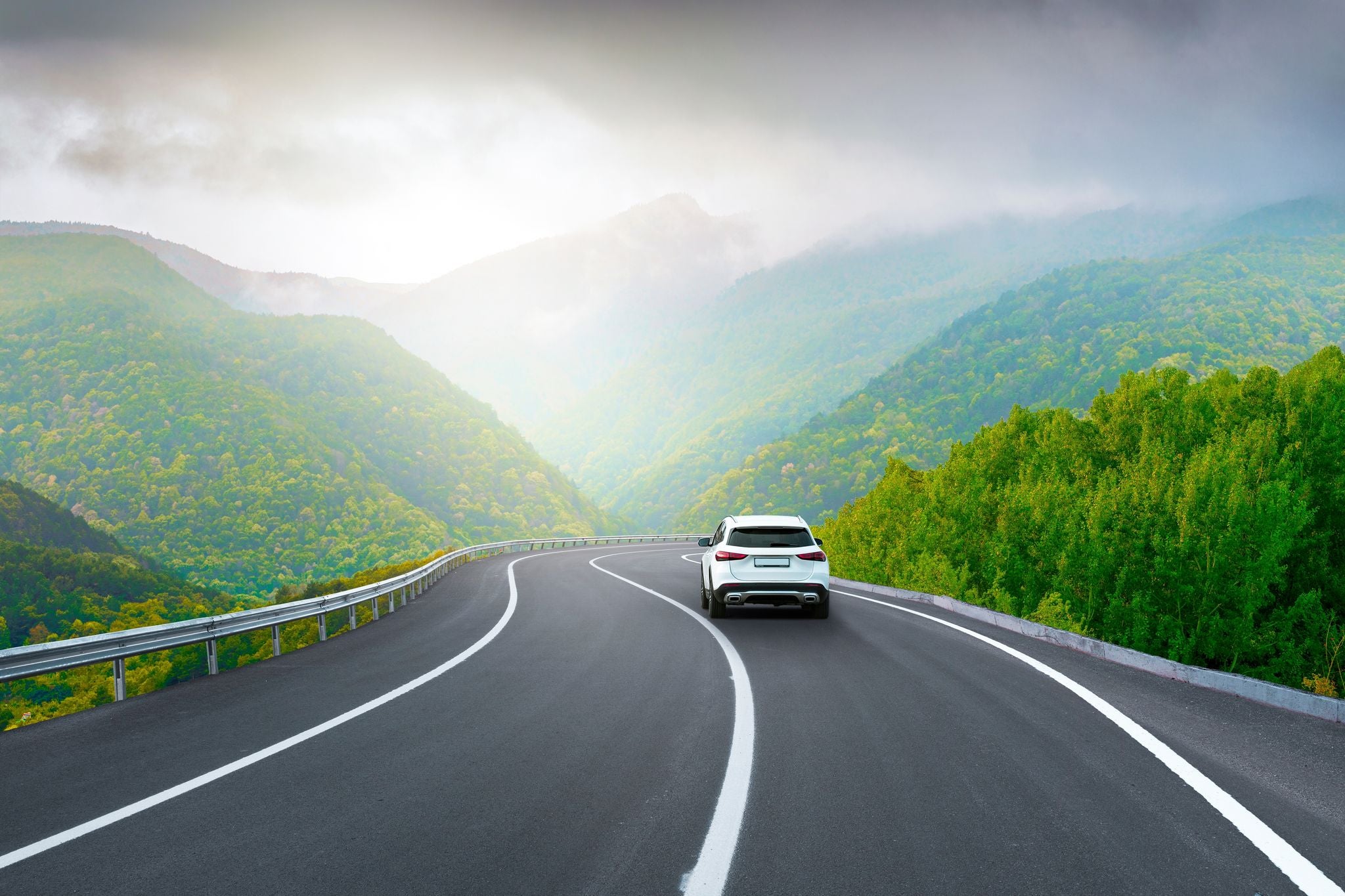
Bavaria's well-developed transportation network makes getting around convenient. The network offers several options for exploring its diverse landscapes, historic cities, and cultural attractions.
Modes of Transportation in Bavaria
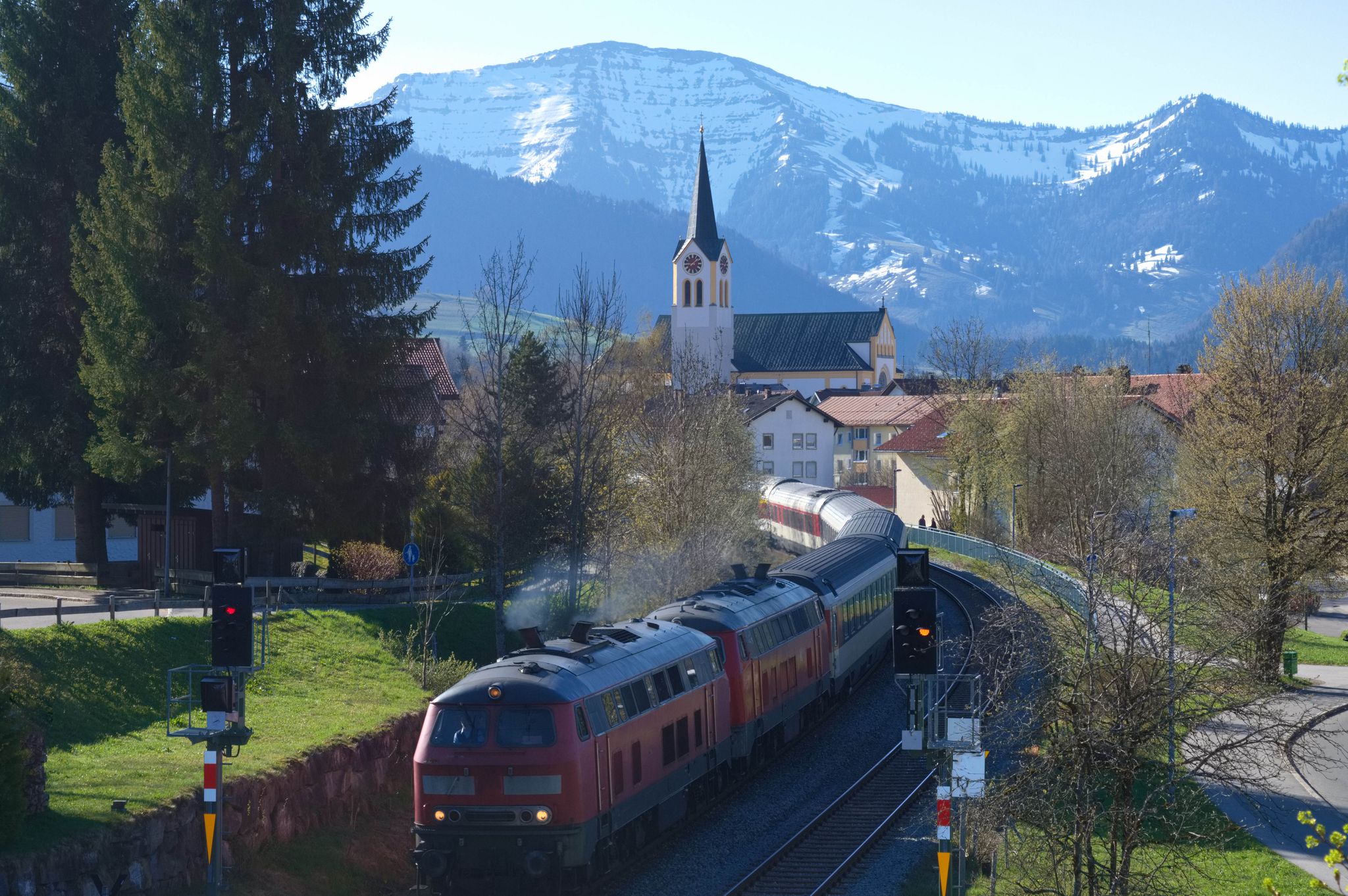
Train: The German rail network efficiently connects major cities and towns in Bavaria, with high-speed trains linking to other regions. Domestic train rides in Germany are perfect for shorter distances, connecting smaller towns and scenic routes. The Bayern Ticket offers unlimited travel on regional trains within Bavaria for one day, making it a cost-effective way to explore. It’s an excellent option for visiting multiple destinations without breaking the bank.
Car: Renting a car provides flexibility for exploring Bavaria’s rural areas and scenic routes, with major highways connecting cities. Rental cars in Munich offer a convenient option for exploring the city and nearby attractions. For those in Nuremberg, rental cars in Nuremberg provide easy access to the surrounding countryside and scenic drives. However, parking in city centers can be limited and costly, so it’s advisable to check availability in advance.
Bus: Local and regional buses complement train services, connecting smaller towns and villages where train routes may not reach. Cities like Munich also have extensive bus networks, offering convenient transportation within urban areas.
Bicycle: Bavaria is bike-friendly with numerous cycling routes, particularly in scenic regions like the Bavarian Alps, Franconian Switzerland, and along river valleys. Many cities offer bike rentals and designated bike lanes, making cycling a popular option for exploring urban centers and rural landscapes.
Boat: Boat cruises along Bavaria's major rivers and lakes offer scenic views and access to waterfront towns and attractions. For example, cruises on the Danube River from Regensburg or along the Konigssee Lake near Berchtesgaden provide unique perspectives of the country's natural beauty.
Best Mode of Transport by Season
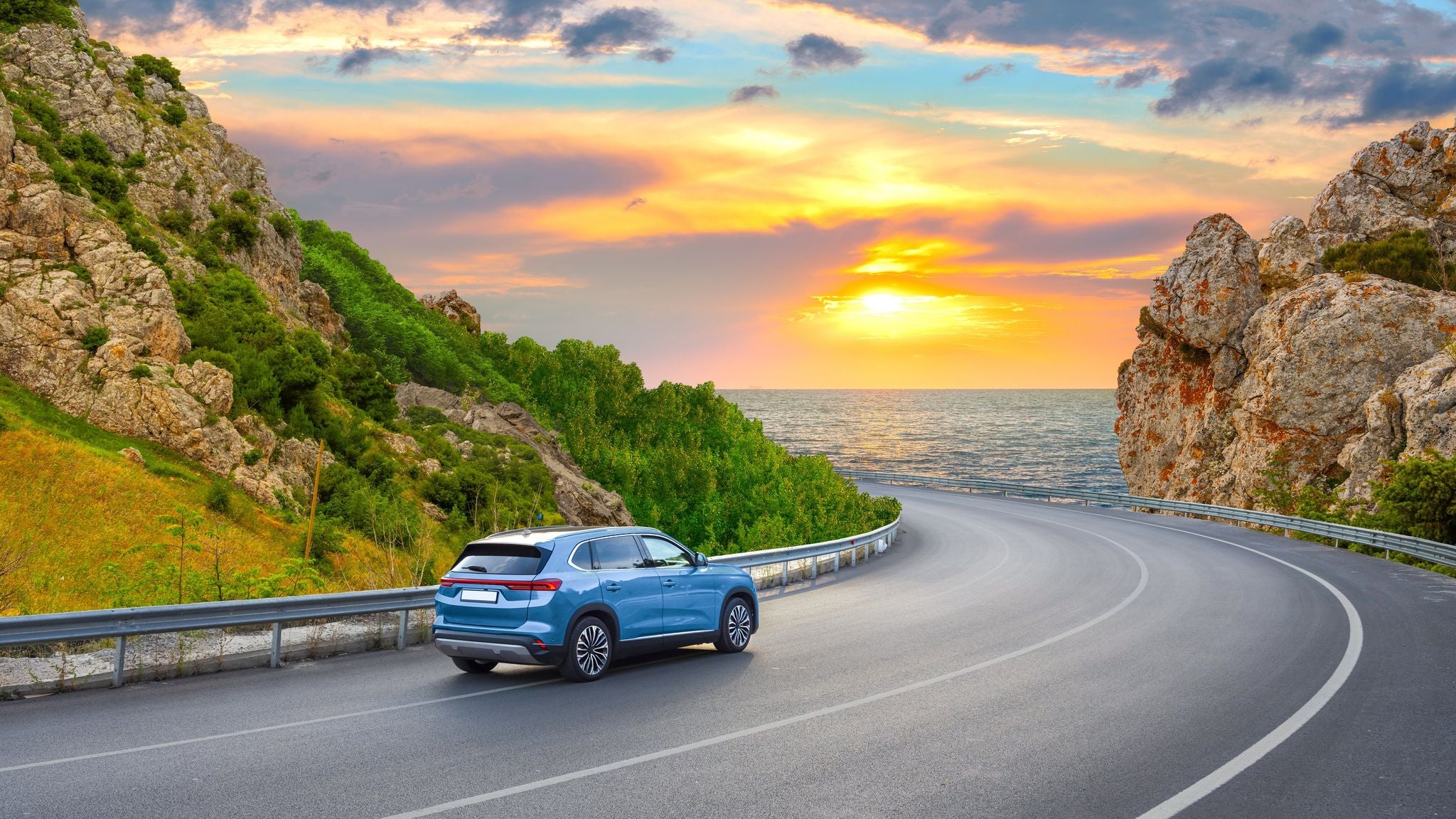
Winter: Trains and cars remain reliable options. Trains are preferable for longer journeys due to potential weather-related road conditions. Ski resorts may require a car for flexibility in reaching slopes.
Spring and Autumn: Trains are a fantastic means of transportation for leisurely exploring bustling cities and traveling longer distances. On the other hand, cars offer unmatched flexibility, allowing you to embark on scenic drives through stunning, blossoming landscapes or immerse yourself in the beauty of fall foliage.
Summer: Trains are recommended for travel between major cities and popular tourist destinations to avoid traffic and parking issues. Cars are beneficial for exploring rural areas and lakeside retreats.
Choose the Perfect Season: Discovering the Best Time to Visit Bavaria
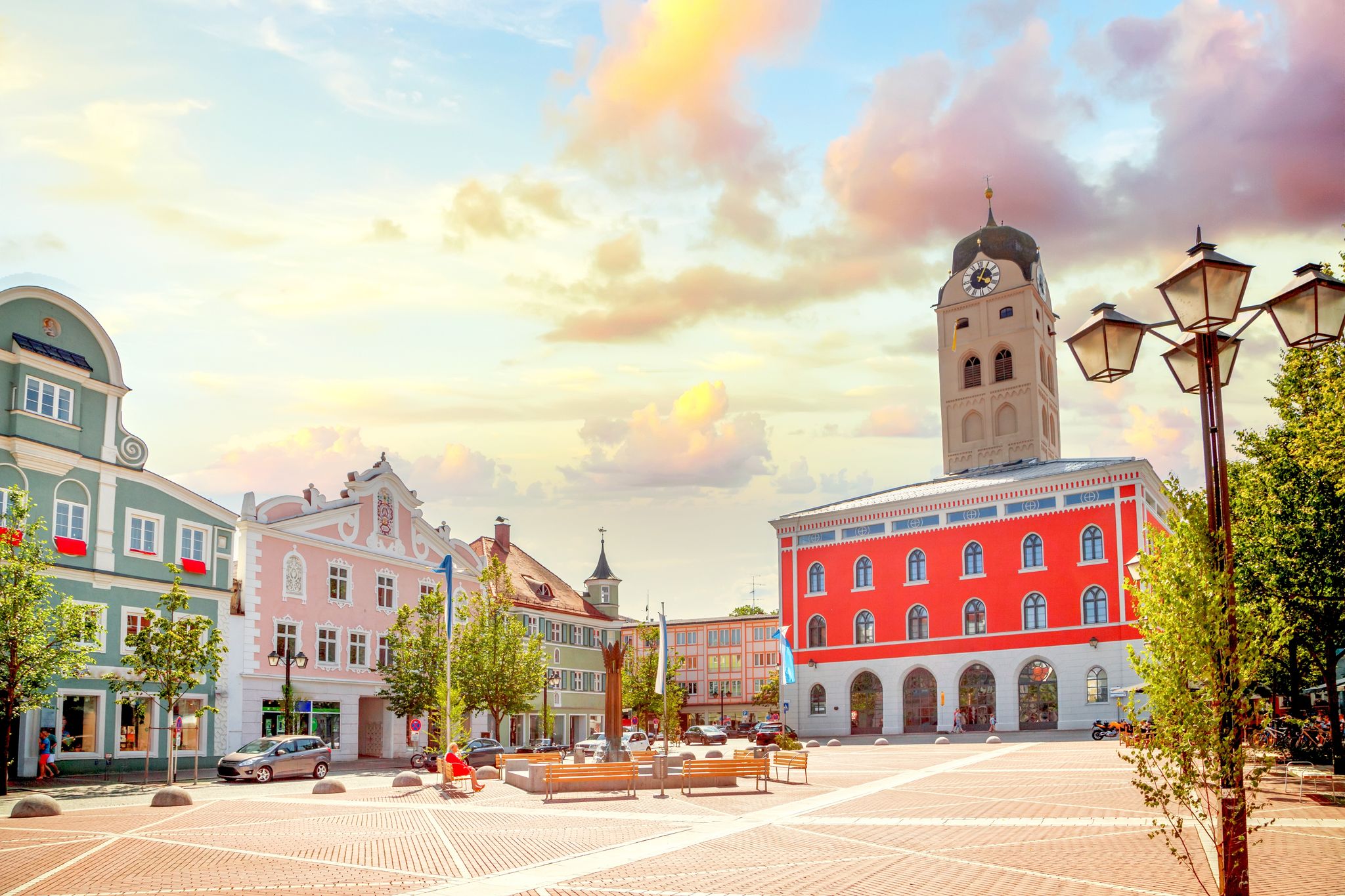
Bavaria enchants year-round, offering unique experiences in every season. Spring brings blooming meadows, perfect for hiking the Bavarian Alps or cycling scenic routes. Summer offers long sunny days to explore iconic castles like Neuschwanstein or vibrant cities such as Munich. Autumn paints the landscape in golden hues, ideal for leisurely hikes and visits to charming towns like Rothenburg ob der Tauber.
Winter transforms Bavaria into a wonderland, with skiing in the Alps and magical Christmas markets in Munich. Whatever the season, Bavaria's natural beauty, cultural festivals, and warm hospitality make it a captivating destination for any traveler. If you want to venture beyond the region, discover the best time to visit Germany.
FAQs About The Best Time to Visit Bavaria
When is the best time to visit Bavaria for outdoor activities?
Spring and early autumn are ideal seasons for outdoor activities in Bavaria. The weather is mild during these seasons, and nature is bursting with color, with blooming flowers in spring and stunning foliage in autumn.
What is the peak tourist season in Bavaria?
The peak tourist season in Bavaria is during the summer months, from June to August. This period sees the highest influx of visitors due to warm weather, outdoor festivals, and longer daylight hours.
When is the best time to visit Bavaria for skiing and winter sports?
Winter, from December to February, is the best time to visit Bavaria for skiing and winter sports. The Bavarian Alps offer excellent skiing conditions during this period, with resorts like Garmisch-Partenkirchen and Oberstdorf being popular destinations. Consider joining a 6-day ski rental in Garmish Partenkirchen.
What are the main festivals and events in Bavaria throughout the year?
Bavaria hosts several renowned festivals throughout the year. Oktoberfest in Munich (September-October), the Wagner Festival in Bayreuth (July-August), and Christmas markets across Bavaria in December are among the most famous.
When is the best time to visit Bavaria to avoid crowds?
To avoid crowds, consider visiting Bavaria in the shoulder seasons of spring (March to May) or autumn (September to November). During these times, tourist numbers are generally lower compared to the peak summer and winter seasons.
What are the weather conditions like in Bavaria during different seasons?
Bavaria experiences four distinct seasons. Summer is warm, with temperatures averaging around 68 F to 77 F (20 C to 25 C), while winter can be cold, with temperatures ranging from 22 F (-6 C) to 38 F (3 C), especially in the Bavarian Alps. Meanwhile, spring in Bavaria sees temperatures ranging from 45 F (7 C) to 60 F (15 C), and autumn sees temperatures ranging from 50 F to 59 F (10 C to 15 C).
Is it necessary to book accommodations in advance when visiting Bavaria?
Yes, especially during the peak summer tourist seasons and around major events like Oktoberfest. It's advisable to book accommodations well in advance to secure your preferred options and potentially benefit from early booking discounts.
What are the advantages of visiting Bavaria during the winter months?
Winter in Bavaria offers opportunities for skiing, visiting Christmas markets, and enjoying cozy indoor activities. The region's picturesque snow-covered landscapes add to this season's magical atmosphere.
Are there any specific attractions or activities unique to each season in Bavaria?
Yes, each season in Bavaria offers unique experiences. For example, spring is ideal for enjoying blooming gardens and outdoor festivals, while autumn showcases fall foliage and wine festivals.
What should I pack when visiting Bavaria throughout the year?
Pack according to the season. In summer, pack light clothing, sunscreen, and a hat. Bring warm layers, waterproof boots, and thermal wear for winter, especially if visiting the Alps for skiing.
Is it expensive to visit Bavaria?
Bavaria offers options for every budget, from budget hostels to luxury hotels, especially in cities like Munich. Local spots can offer affordable dining, though upscale restaurants are pricier. Public transportation is cost-effective, but renting a car adds extra costs. Many attractions are affordable, but popular sites like Neuschwanstein Castle can be more expensive.
